One of the defining features of a force that uses helicopters is that they have long legs, and with all the various vehicles to choose from in previous posts, they can have even longer and stronger legs.
This section is about extending their arms and the reach of their eyes.
This is an interesting video from China.
They make use of a mix of mounted and demountable weapons, which points to an important point, do you mount weapons or carry them?
Most of the vehicles in the previous posts in the series are unprotected.
If they are treated as fighting vehicles, there is a higher risk of them faring poorly.
The real value of any concept built around helicopter transportable vehicles is the people they carry. If we can provide the means for them to commute to and from work faster, over greater distances than walking, or in extreme terrain, that should be the focus.
But as always, options abound.
Sensors and Communications
Improving sensor capability allows the deployed group to better exploit the weapons they have with them, and the weapons that exist a mere telephone call away.
Fair fights are for boxers and schoolboys.
Naval Gunfire Support from a Type 26 Frigate, an Apache raid, an F-35B or Typhoon sortie, a Tomahawk submarine-launched cruise missile, a Storm Shadow, GMLRS or some of the future deep strike weapons in the planning pipeline should all be in the mix.
Good communications enable these linkages to be established.
Thankfully, even the most capable communications systems are compact, the new MPU/5 and AN/PRC-163 for example.
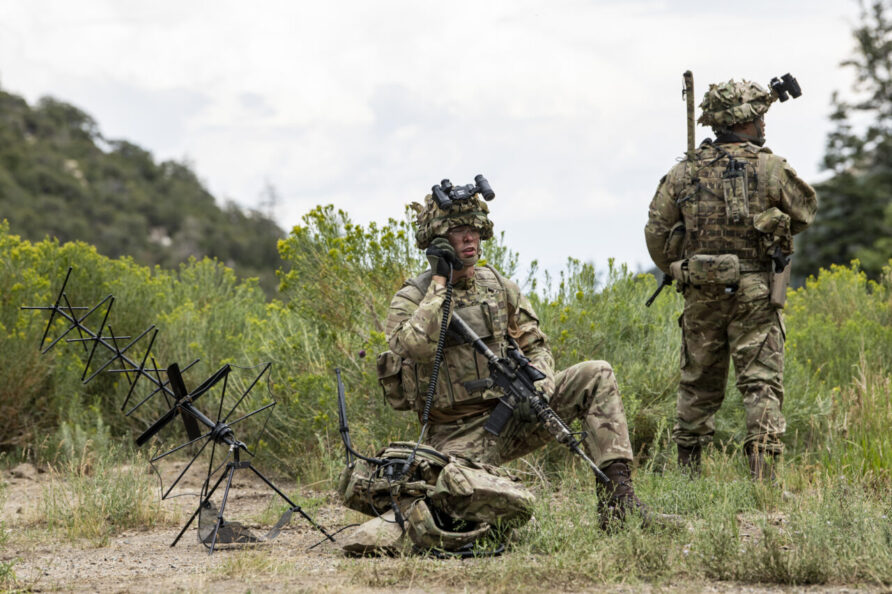
Slingshot and Troposcatter are two new systems from Spectra Group that have recently entered service and have unrivalled capabilities.
Slingshot was used in the UK deployment to Mali recently
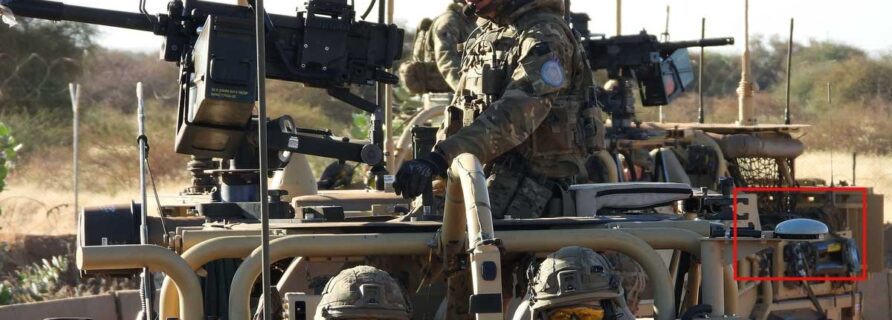
The Elbit Dismounted Joint Fires Integrator (DJFI) system equips UK Joint Terminal Attack Controllers (JTACs).
Taken together, these enable small terms to exert a disproportionate influence.
There are upgrade options.
The recently ordered Saab Giraffe 1x is a compact system, does not need any air conditioning and runs off standard power supplies.
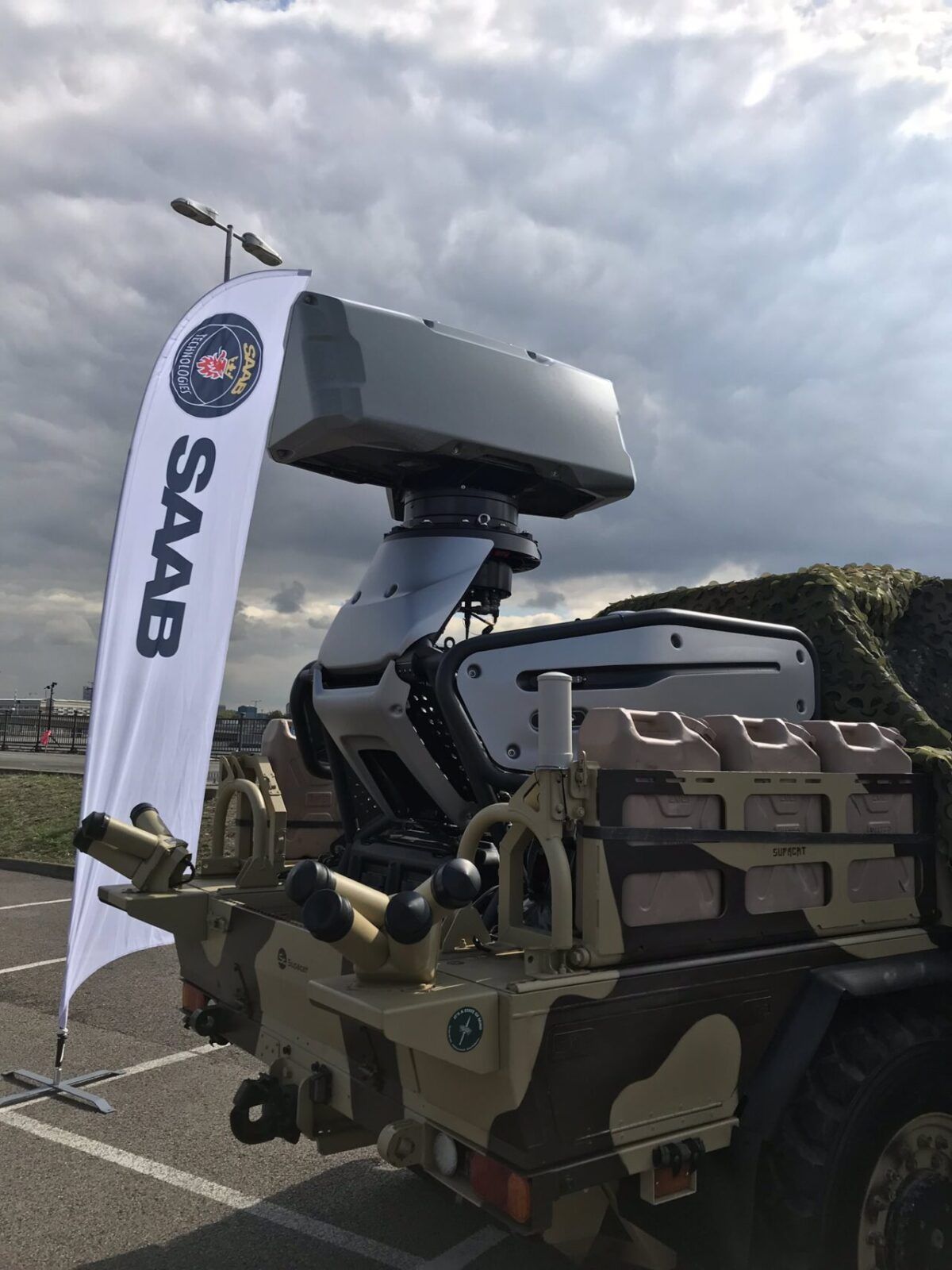
Tethered UAS would also be a useful addition, as would any of the air defence and C-UAS systems, although most of these can be dismounted.
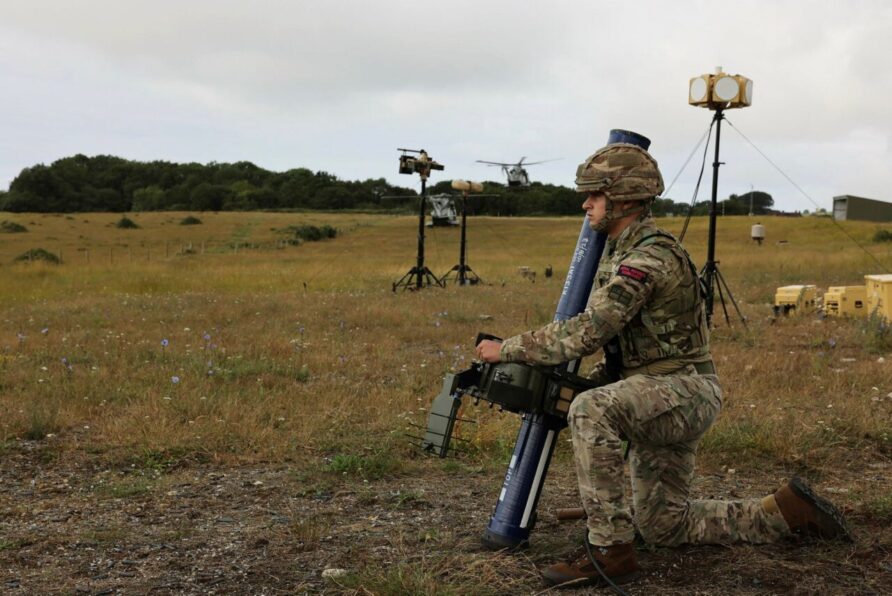
The Hawkeye Land Surveillance system from Chess Dynamics, shown below mounted on an IDV Viking UGV.
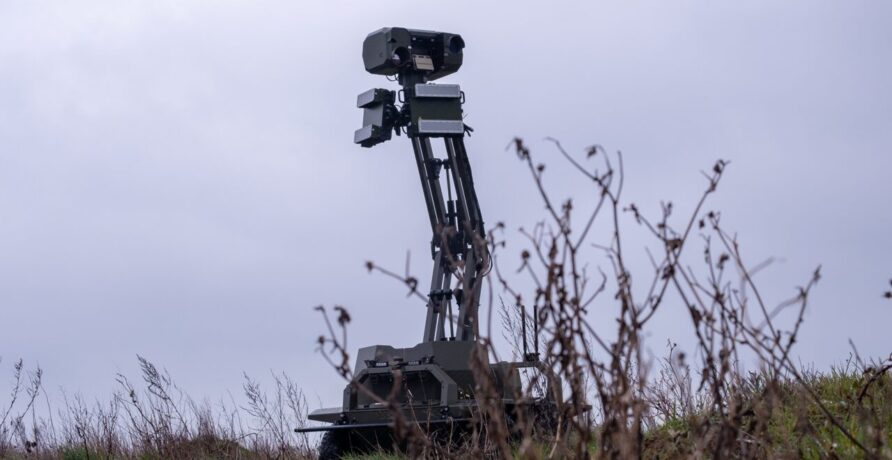
It is a vehicle-based system, yet it would provide a small and light force with a serious uplift in observation and surveillance capability.
It could be mounted on most of the vehicles in the series, not just the uncrewed ones.
As MSI Defence has developed the ISO Flat rack mounted Terrahawk Paladin C-UAS system, a smaller-scale surveillance-only system using something like the Hawkeye, yet mounted on a pallet footprint, would allow this capability to be vehicle-independent.
A few years ago, a company called Dytecna developed a pallet-based equipment shelter called the Cube.
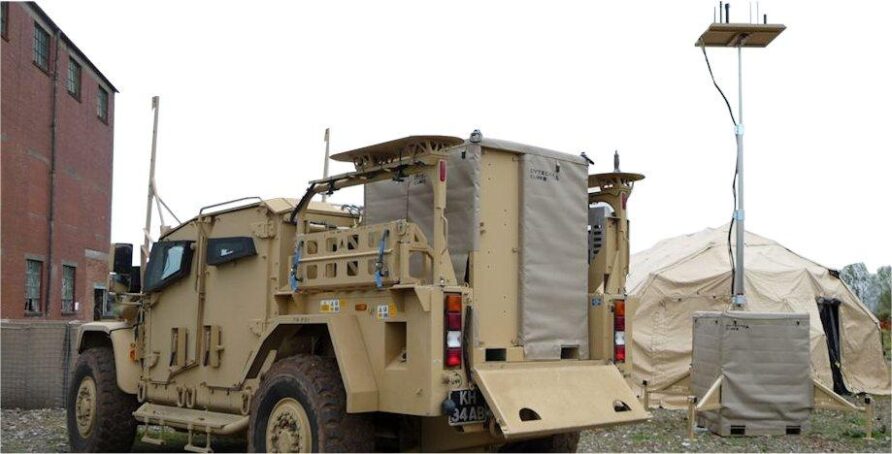
The Cube was designed to be adaptable, with options for different types of electronic equipment and telescopic masts.
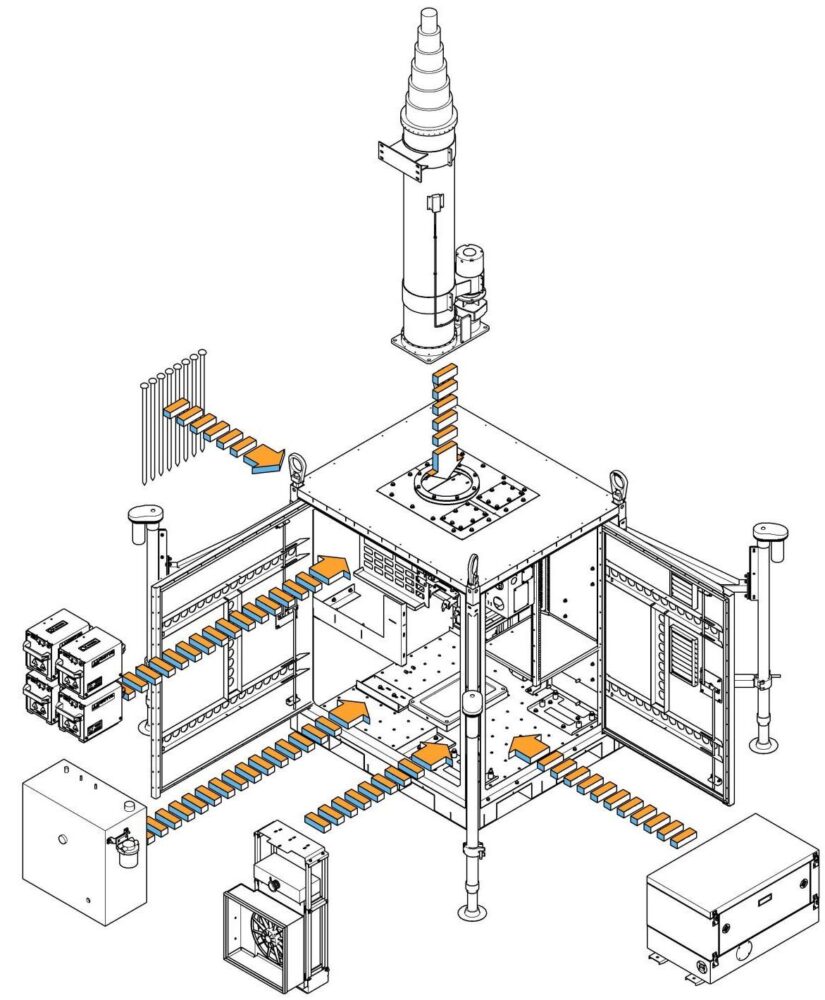
Dytecna are no longer in business, but the concept was sound, with new equipment, it would provide a mix of capabilities and would be specific vehicle agnostic.
Medium Calibre Automatic Weapons
The 7.62 mm GPMG or other similar weapons can be easily mounted on retracting or removable pintle mounts, the 12.7 mm HMG would be more of a challenge for some vehicles.
The mechanical simplicity of the M2 has much to commend it, recoil-operated and rock-solid. The faster firing M3 might be a quick-to-adopt option (they are already in service on Army Air Corps and Fleet Air Arm Wildcats), but it is difficult to see any advantages, the higher rate of fire suits perfectly a helicopter, but not a vehicle.
There are quite a few 20 mm automatic cannons still in production. The AE 20 mm or Alexis 20 mm weigh about the same as an M2, but have significantly more powerful ammunition.
The Alexis weighs 49 kg and has an effective range of 1,500m, with a selective rate of fire of 300 or 750 rounds per minute, with TP Target practice, TP-T Target practice Tracer, AP Armour piercing, AP-T Armour piercing Tracer, HEI High explosive incendiary and an MP Multi-purpose round.
The Nexter M621 is another example of a simple, recoil-operated, 20 mm automatic cannon, as is the Rheinmetall KAE. The Nexter M621 has recently been selected by the German Army for special forces use in a manually aimed ring mount.

20×113 mm, 20×128 mm and 20×139 mm ammunition is manufactured all over the world, in widespread use with plenty of natures available.
Moving to 30 mmm, the 118 kg Nobles Viper gun mount uses a manually aimed 30 mm M230LF, maintaining ammunition commonality with Apache.
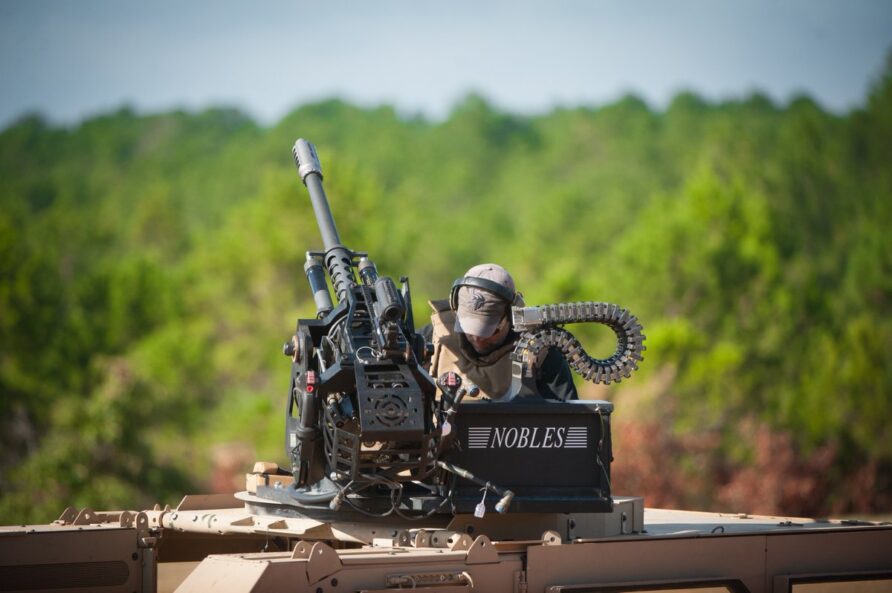
Instead of manually aimed pintle mounts, a Remote Weapon Station (RWS) dramatically increases effective range and will provide a secondary surveillance and observation capability.
The most recent RWS order is for Boxer, the Königsberg Protector RS4, manufactured under licence by Thales in Glasgow.
The RS4 is the latest iteration and is now fully GVA compliant, has multi-axis stabilisation, offers the ability to be remotely controlled from outside the vehicle and can be operated by multiple crew stations, a very clever piece of equipment that allows the maximum range of the mounted weapon to be fully exploited.
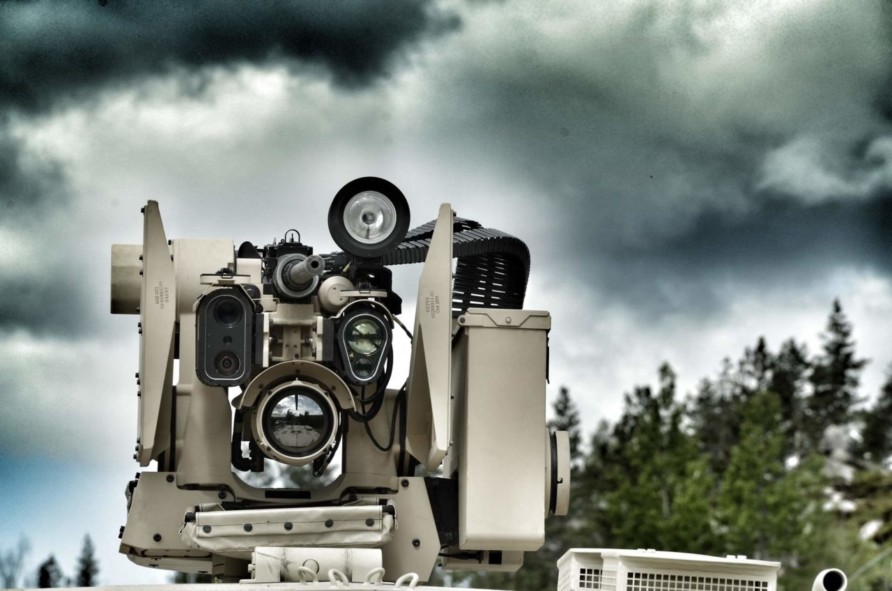
It adds 135 kg of top weight, plus the weight of the weapon and ammunition.
It will feature a Thales Catherine-EZ cooled thermal imager, Thales CELT3 laser rangefinder and a Königsberg VIS95 daylight camera.
Although you see them less than the 12.7 mm Heavy Machine Gun in promotional materials, the Thales RS4 can also mount the 40 mmm Grenade Machine Gun. With an ability to fire High Velocity 40 mm grenades, it could provide overlapping and complementary options to the 12.7 mm HMG, to a similar range.
The GMG does not have a dual feed capability, so any change in nature would require manual intervention, so dual-purpose natures seem to be the most common, available from many sources. So far, air-bursting 40 mmm HV grenades do not seem to have entered widely into service, but options are certainly there.
To enable this, a change to the weapon is needed, Ammo is marketing a product called the MPU that allows existing 40 mm Ages to be quickly modified for their air-bursting natures.
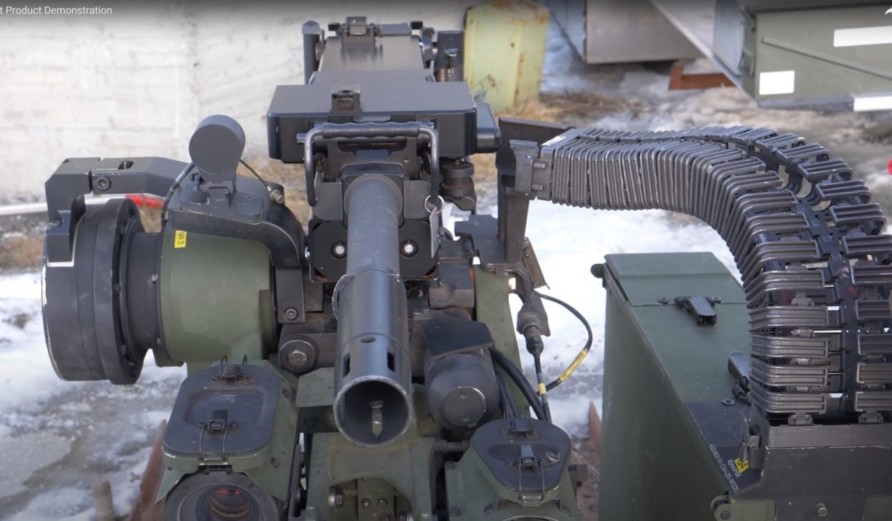
Exploiting the newer air-bursting grenades, there are also some interesting counter-UAS solutions becoming available, the Aselsan Atom and a similar product from Nammo/Escribano. With an effective range of about 500m, these counter-UAS grenades have obvious limits.
Using an uncrewed vehicle to quietly position and reposition a direct-fire 30 mm automatic weapon, would I think, be quite a strong proposition, arguably one of the better uses for them?
AEI has developed a low-cost and ITAR-free 30 mm automatic cannon called the Venom-LR.
The British Army has recently trialled this with an Unirobotics Trakkon RWS on a HIPPO HAWC uncrewed platoon load-carrying vehicle described earlier in the series.
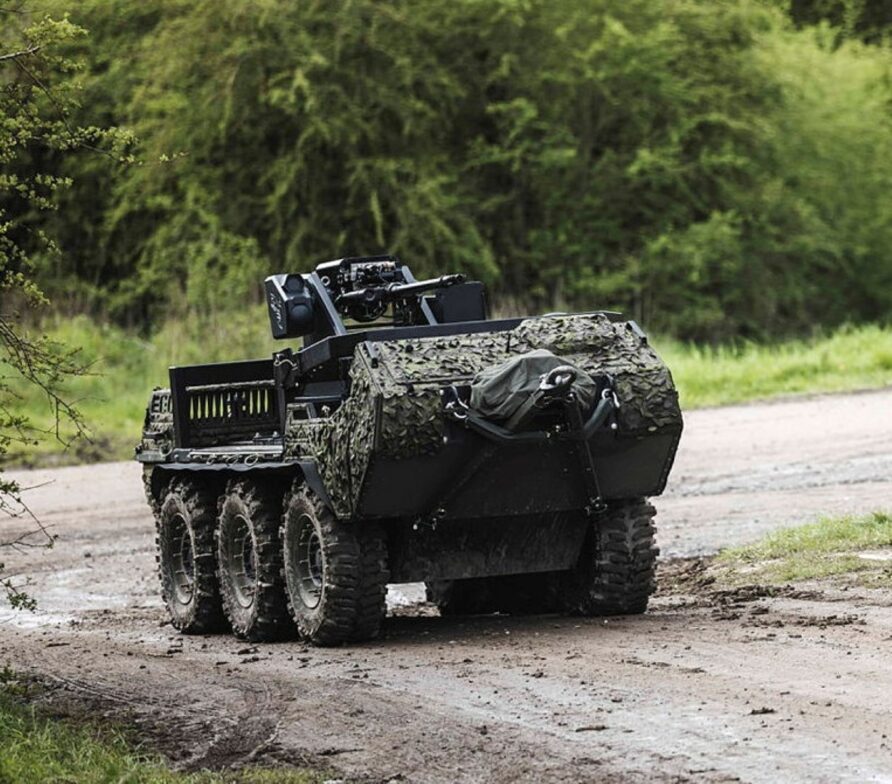
Venom-LR has an effective range of 2,000m with a good spread of ammunition natures and a total weight of 120 kg. Single shot or automatic, this would be a powerful addition.
AEI has done a lot of work on recoil energy attenuation and some have claimed that the Venom 30 mm LR can be a direct drop-in replacement for 12.7 mm M2, shown below on a Valhalla Midgard RWS
Various other RWS could be used, off the shelf, or using in-service designs.
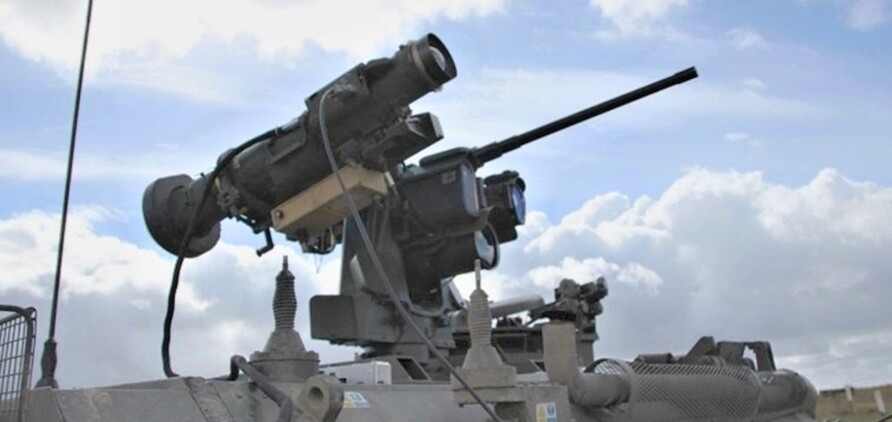
Adding a medium-calibre automatic weapon, especially with an RWS, to any of the vehicles or trailers dramatically increases the surveillance capability, firepower and long-range effectiveness of the deployed force, but it comes at the significant penalty of being vehicle-bound.
Missiles and Loitering Munitions
Portable weapons such as Javelin and NLAW are in service and could be carried in decent quantities, loitering munitions may not yet be in service, but they have been trialled and are at sufficient technology readiness to introduce quickly should they be needed.
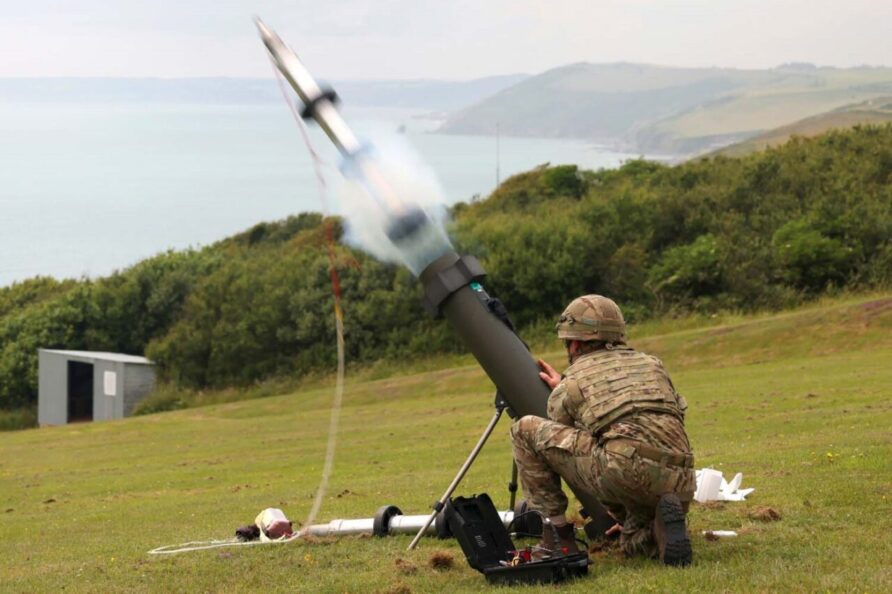
There is no absolute need for vehicle integration.
Brimstone 3/JAGM
As Brimstone 3 enters service with the RAF and JAGM with the British Army (on Apache), these 50 kg weapons provide an option for a light force to extend their reach beyond Javelin, and with Brimstone 3, the powerful autonomous guidance capability.
Brimstone 3 could be volley launched from cover and the launch point vacated before the missiles hit their targets.
As we have seen from Ukraine, Brimstone vehicle launch is possible, and various vehicles and UGV manufacturers have shown models in different configurations.
A six-missile launcher on the Milrem Themis
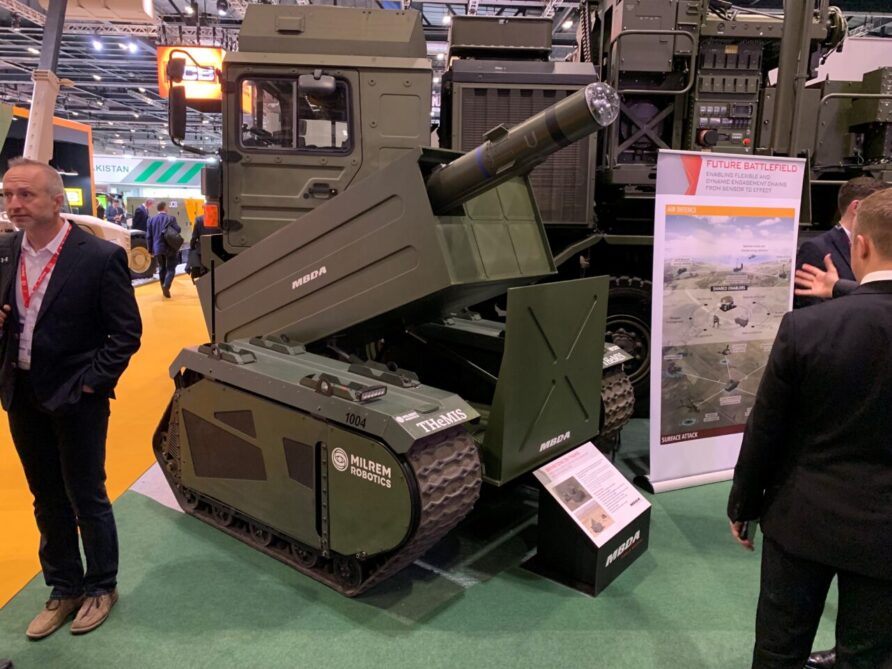
Or the 8 missile launcher on this Project Wulfram demonstration vehicle from Supacat.
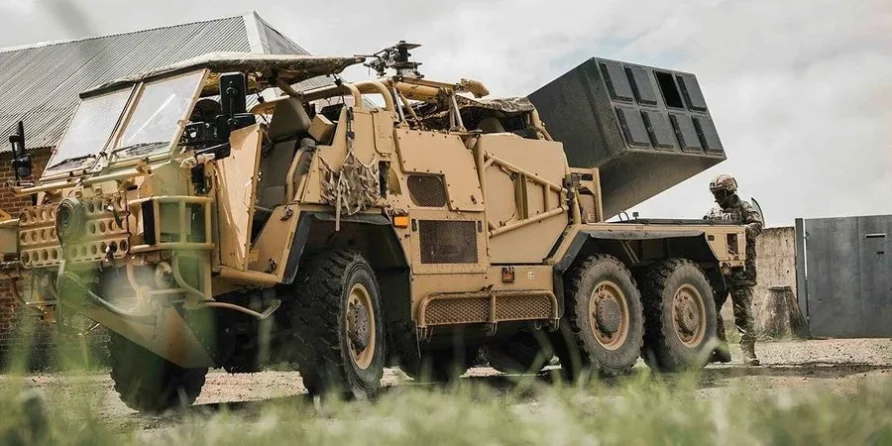
Not all the vehicles in the previous posts would accommodate these, but most would, and they would all be tethered to the vehicle.
AVT also did some concept work on Brimstone, well worth a look.
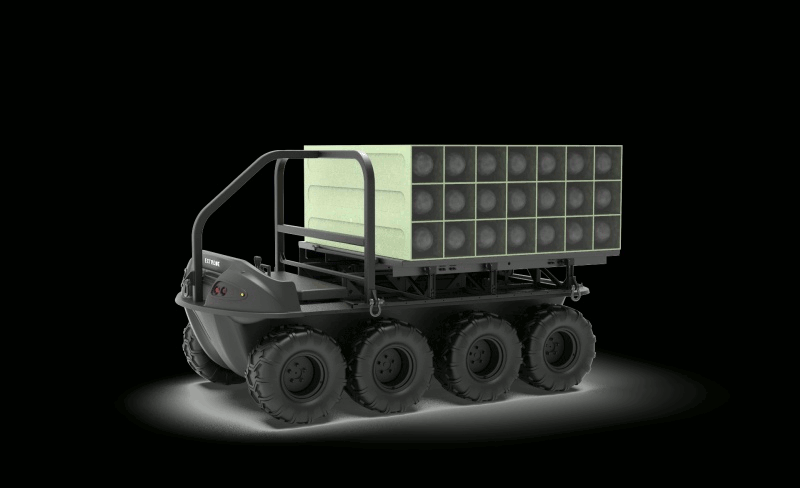
A single-round launcher is another alternative to avoid vehicle dependence.
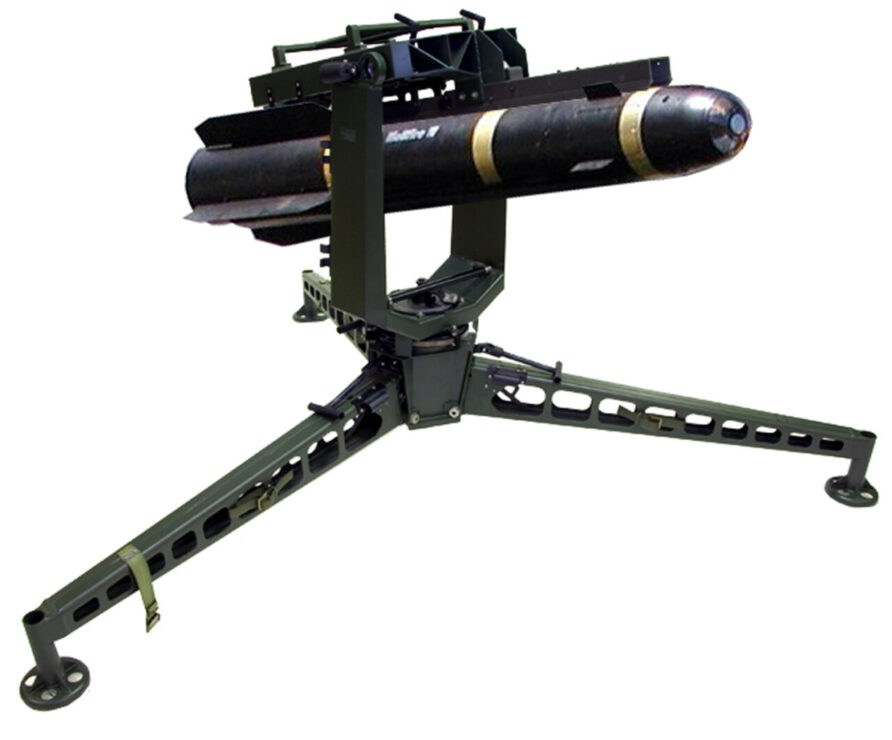
This does not exist for Brimstone 3, or I think for JAGM, but the Swedish Robot 17 (Robotsystem 17) shows what is possible with a 50 kg missile.
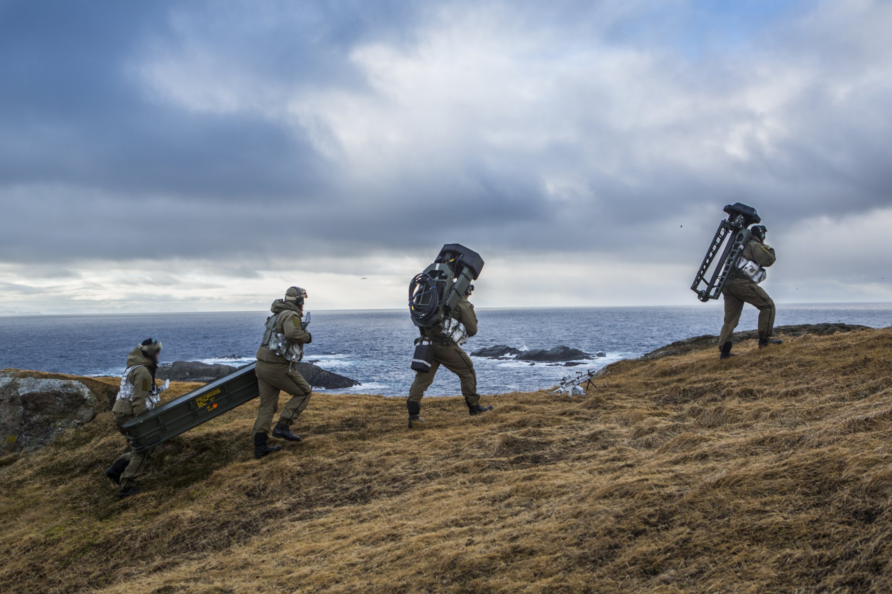
Distributed, and launched remotely, a Brimstone 3 or JAGM in this configuration would be a powerful ambush weapon.
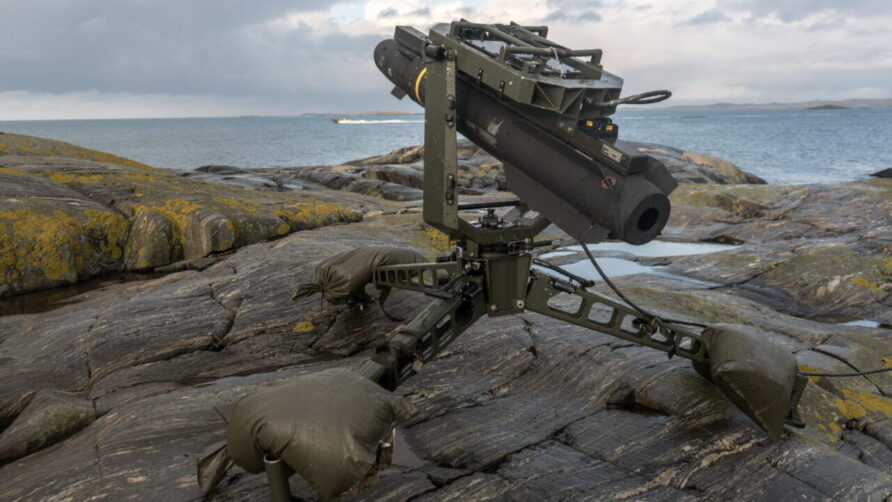
A couple of manufacturer mock-ups have also been shown using the triple rail launcher on a heavy lift UAS, such as this from Hydra Drones.
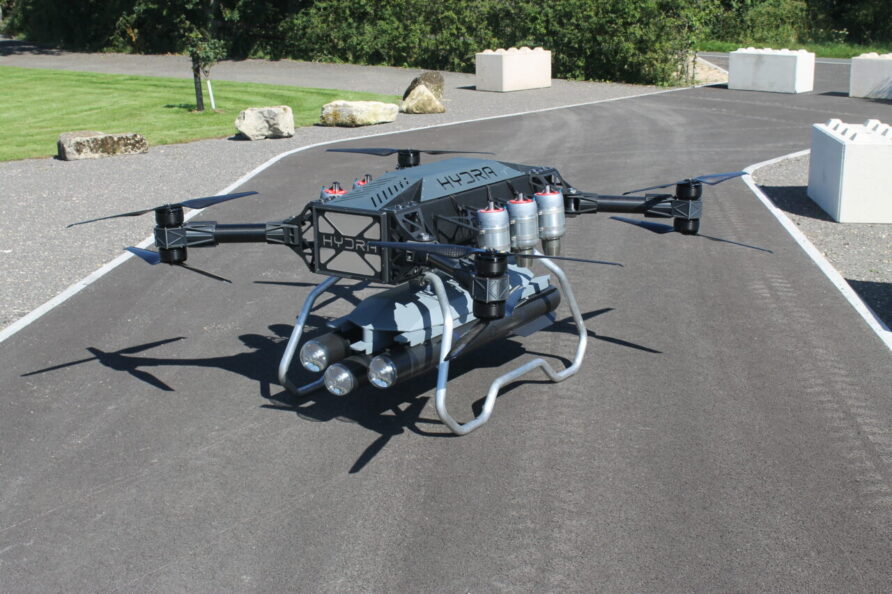
A single system as above could be contained within a simple vehicle-mounted pallet box, used to extend the reach of the team.
Exactor/Spike NLOS
If Javelin is 4 km (ish) and Brimstone 8 km (ish), Exactor (or Spike NLOS) pushes out to 25 km (ish), but with an electro-optical guidance system.
With an effective range of between 25 and 30 km, the latest variant weighs 71 kg in its canister, much larger and heavier than the previous versions.
In the current towed configuration, it should be possible to carry internally in either Berlin or Chinook, but the height might be challenging.
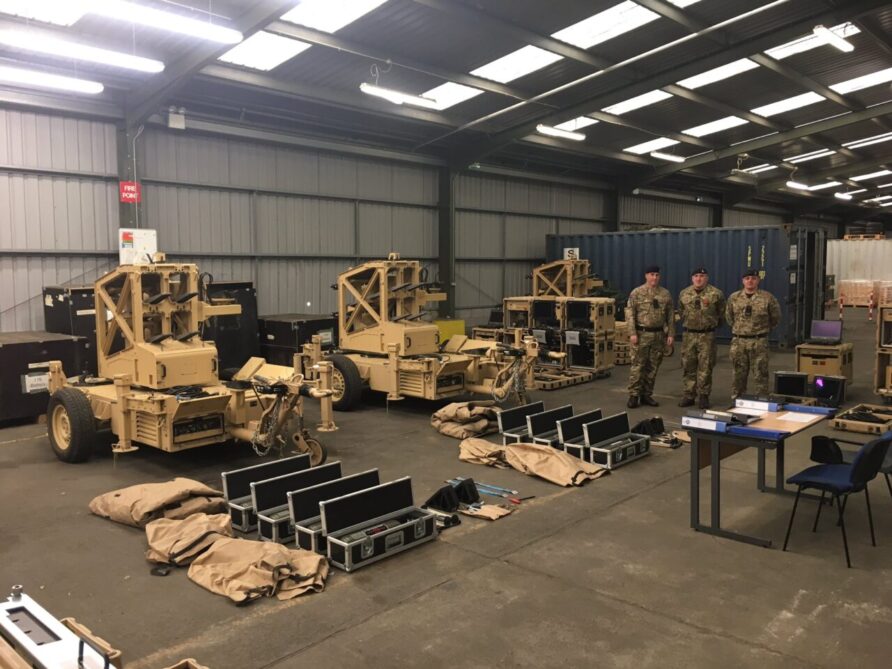
Other users have shown them on smaller vehicles.
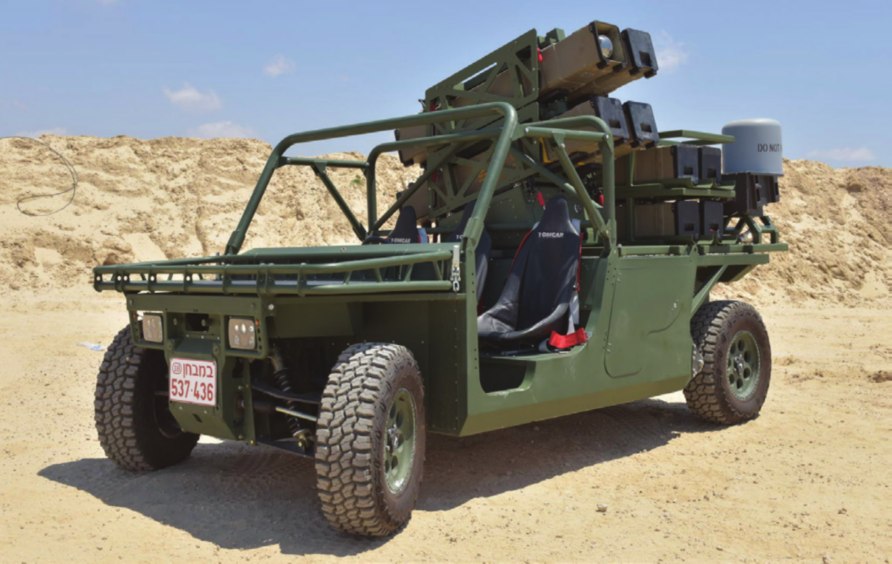
A similar configuration could be used on many of the vehicles in this series.
The future of Exactor seems uncertain, especially as it straddles the distance between the Mounted Close Combat Overwatch (McCoy) and Land Precision Strike (LPS) programmes, but it would no doubt provide an extra level of longer-range precision attack capability.
It is still being used, as shown in this recent tweet from 7 Regiment Royal Horse Artillery
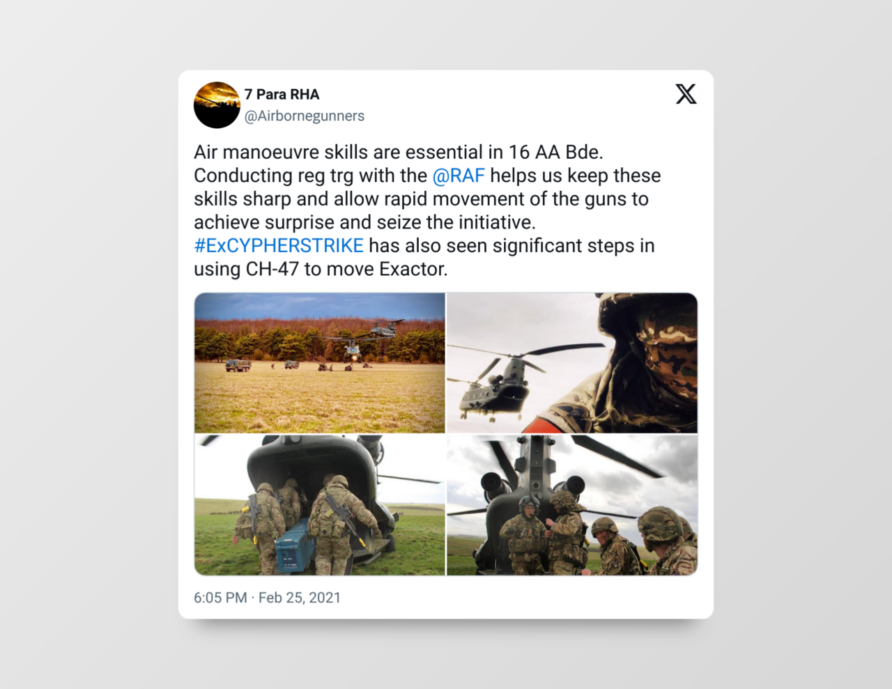
Loitering Munitions
The same could be done with most of the loitering munitions and UAS commonly available, expanding the deployed force reach significantly, the very essence of not fighting fair.
One example is the UVision Hero 120, also offered by Rheinmetall.
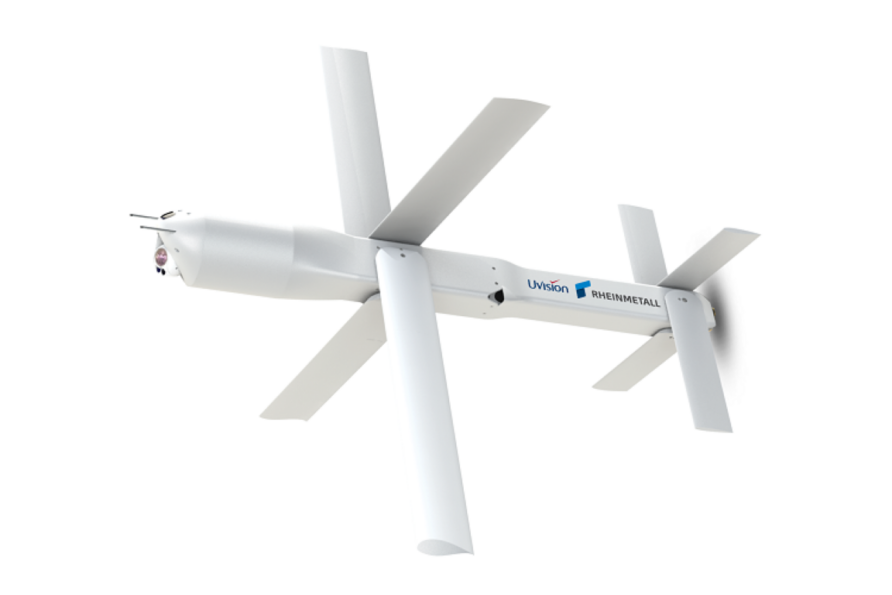
Hero 120 weighs 12 kg, with a 4.5 kg warhead and a range of 40 km. Hero 120 has been purchased by the USMC and demonstrated to the Royal Navy as part of their Percy Hobart Fellowship
The USMC version of Hero 120 was selected to meet the requirements of its Organic Precision Fire Mounted (OPF-M) programme, using the same warhead as fitted to the Javelin, with Mistral inc delivering the programme.
Separately, the Flyer 72 is shown below with a Hero 120 launch assembly.
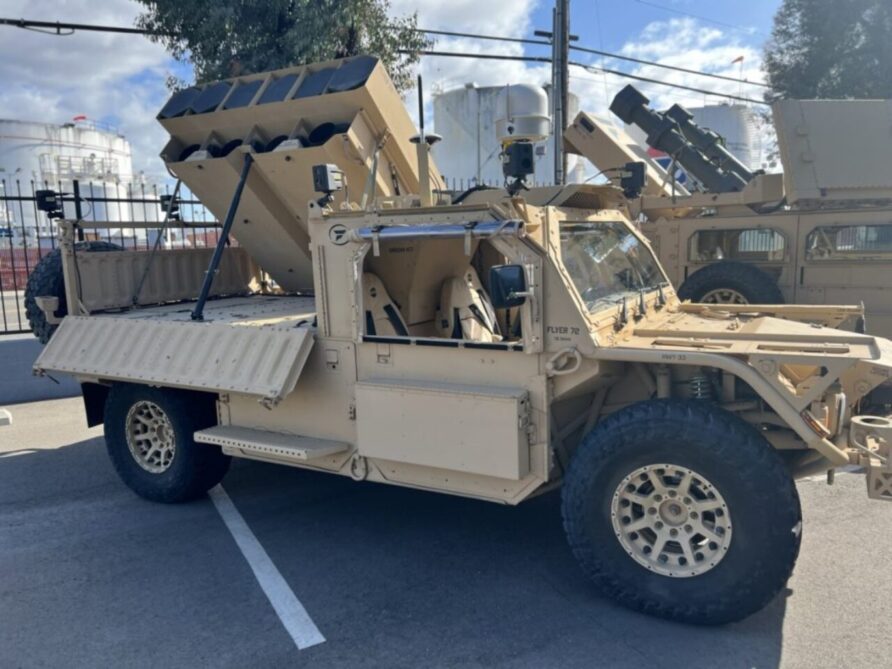
But a decision on ‘mounted or demounted’ is the same.
LMM/Martlet and Starstreak High-Velocity Missile (HVM)
Both LMM/Martlet and Starstreak HVM can be shoulder-launched.
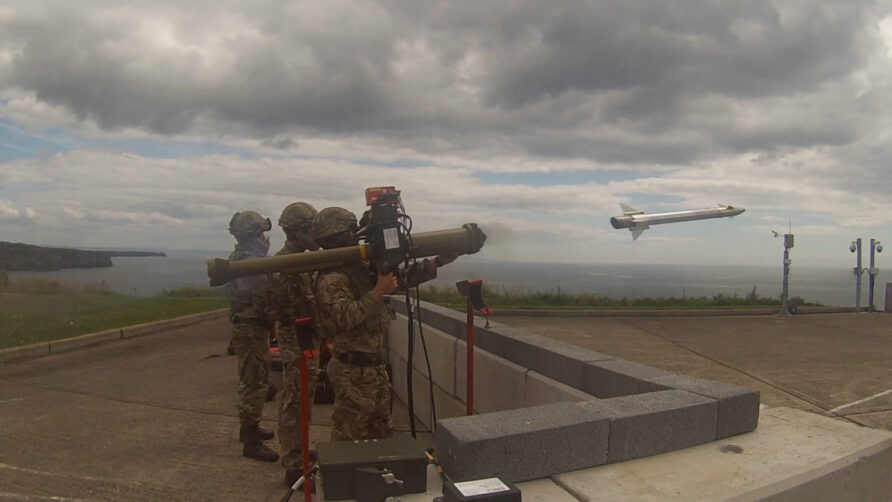
Or use the Lightweight Multiple Launchers (LML).
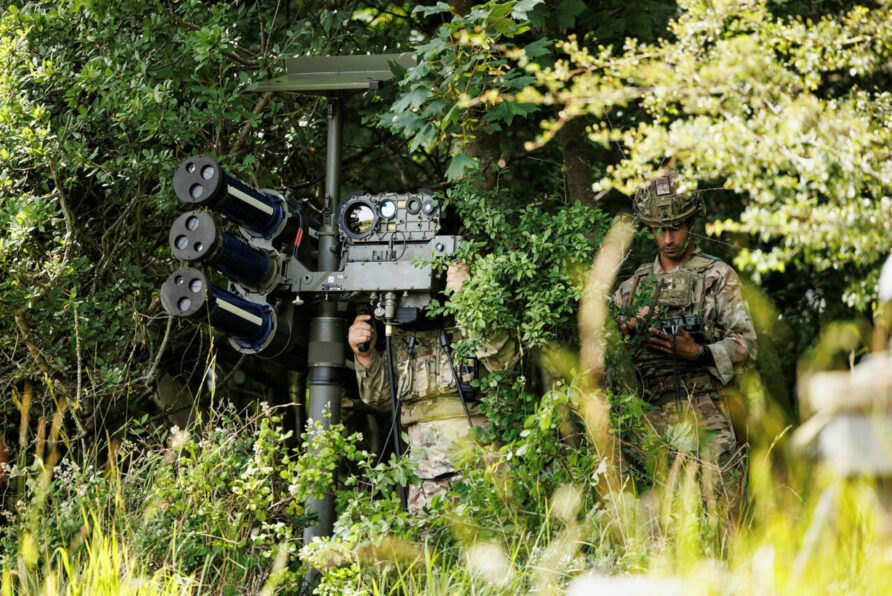
Either LMM or HVM could be simply carried as cargo, without the need for any vehicle integration.
70 mm Rockets
Although we don’t yet have any 70 mm rockets in service that will replace CRV-7 on Apache-E, I suspect we will bring Hydra into service shortly, and likely APKWS II from BAE.
Arnold Defense for a few years has marketed a vehicle-based launch pod for 70 mm rockets (not just APKWS).
If APKWS does enter service, it will be another weapon option that is already in the supply chain, with only the vehicle launchers to obtain.
The 4-round LGR-4 weighs 27 kg, in addition to the weight of rockets and mounting mechanism. The launcher length is 1.9m
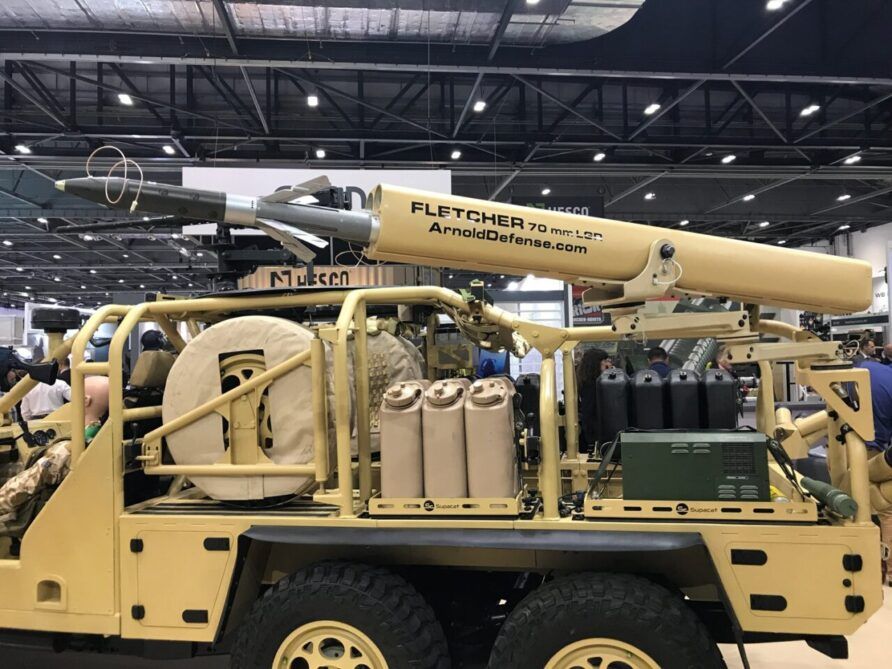
The maximum guided range is 6 km.
A 23-round launcher called the LGR23 is also available, weighing 84 kg.
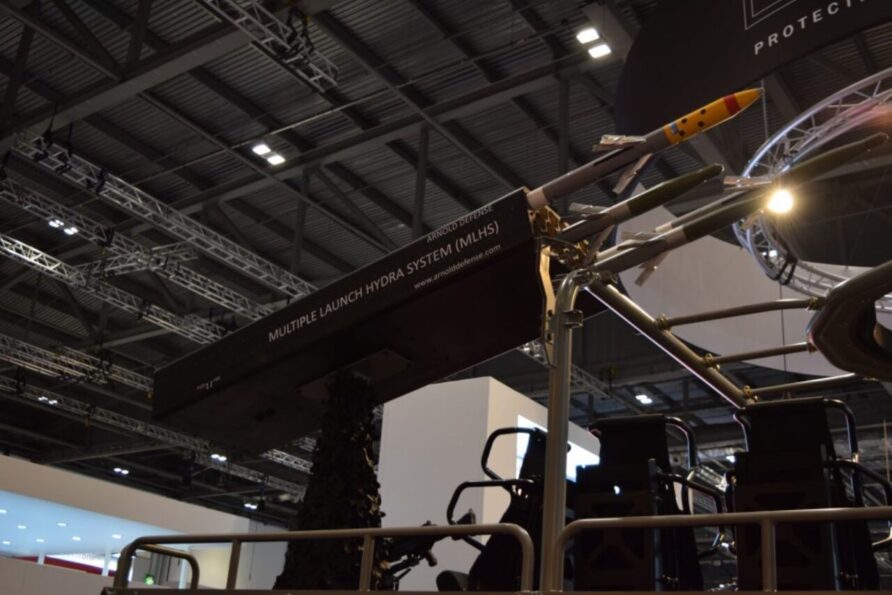
Fully loaded, the LGR23 weighs 450 kg.
There are other manufacturers of similar guided rockets and multiple launchers.
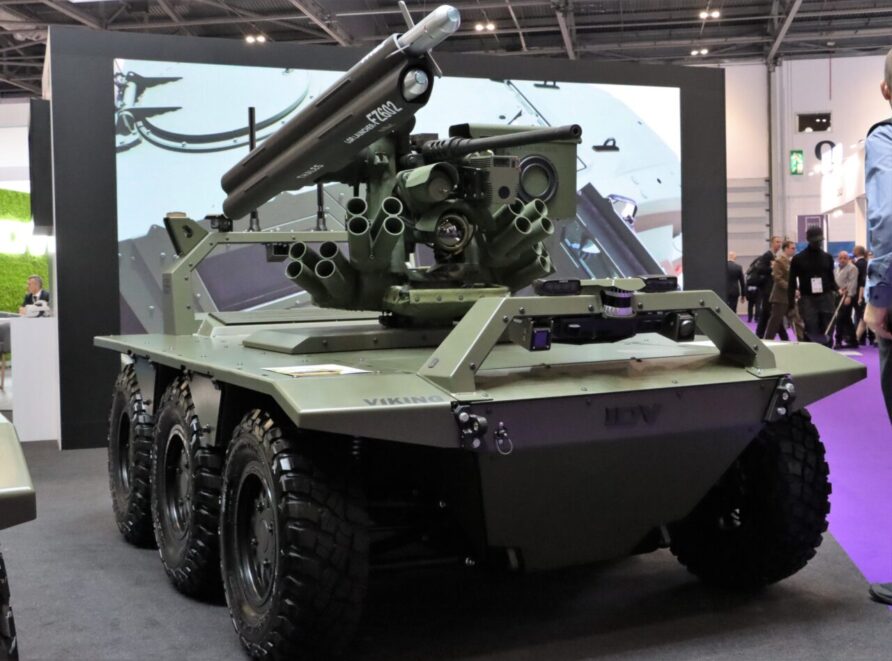
Mortars and Artillery
The problem with moving artillery by air is always the ammunition, not the gun, but for completeness, the option is there. Mortars might be a more sensible choice.
105 mm Light Gun
The 105 mm L118 Light Gun has been in service with the British Army since 1974 and has been used continually since, it is a solid and reliable workhorse and will be in service for a few years yet.
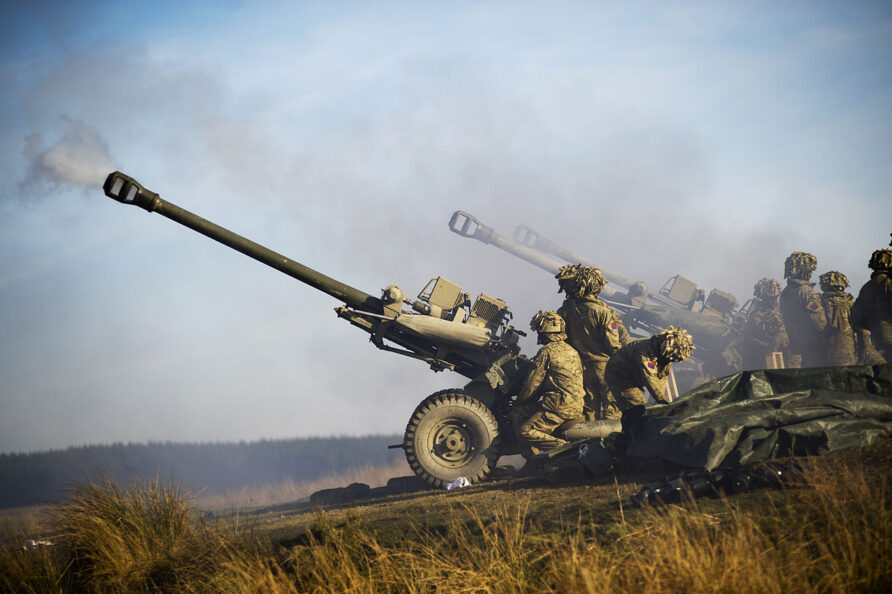
For further discussion on replacement options, click here.
Although usually carried as an underslung load, it does fit inside a Chinook and could do so in Merlin. Carriage efficiency would depend on the towing vehicle.
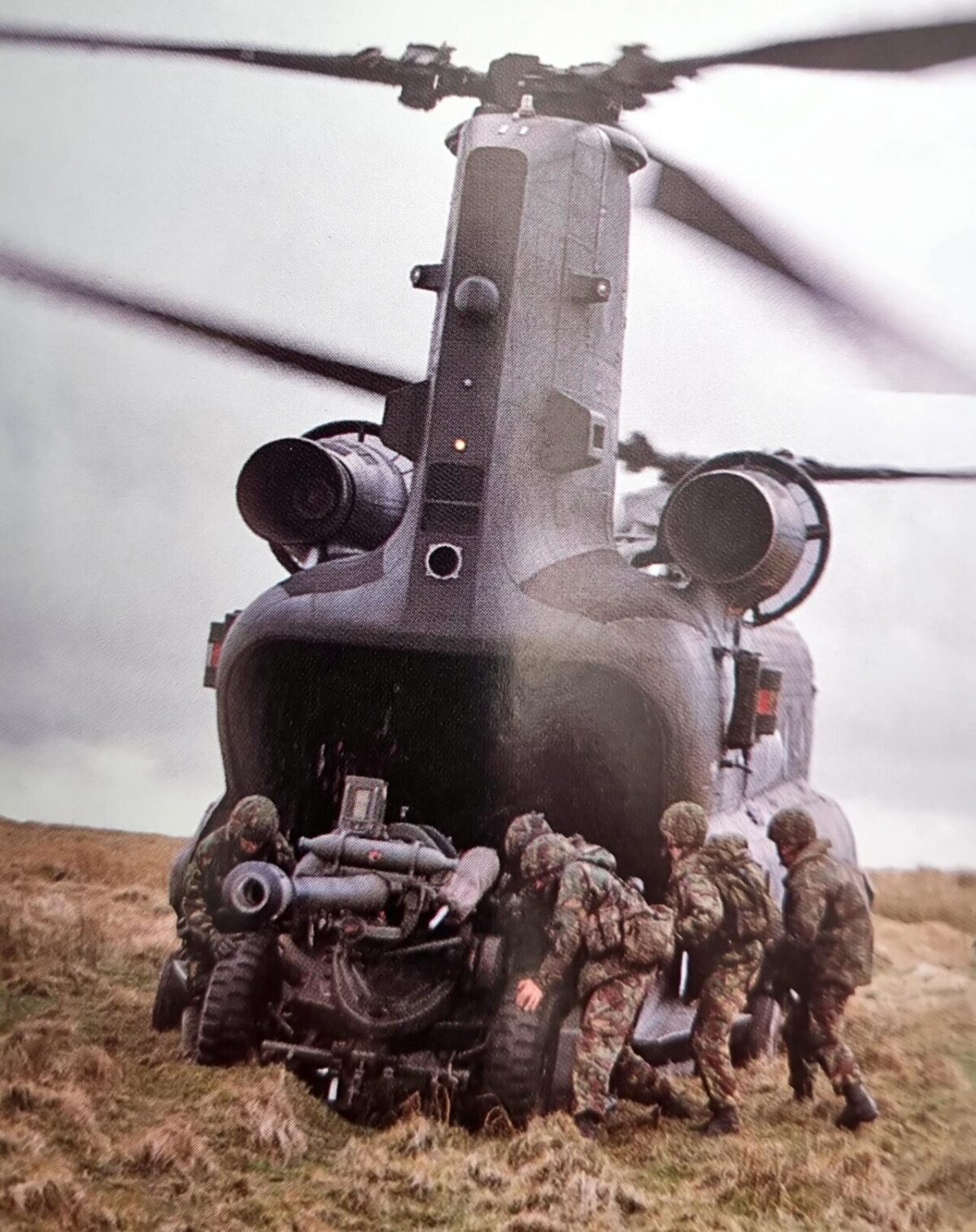
The space available for a towing vehicle in either helicopter is shown below.
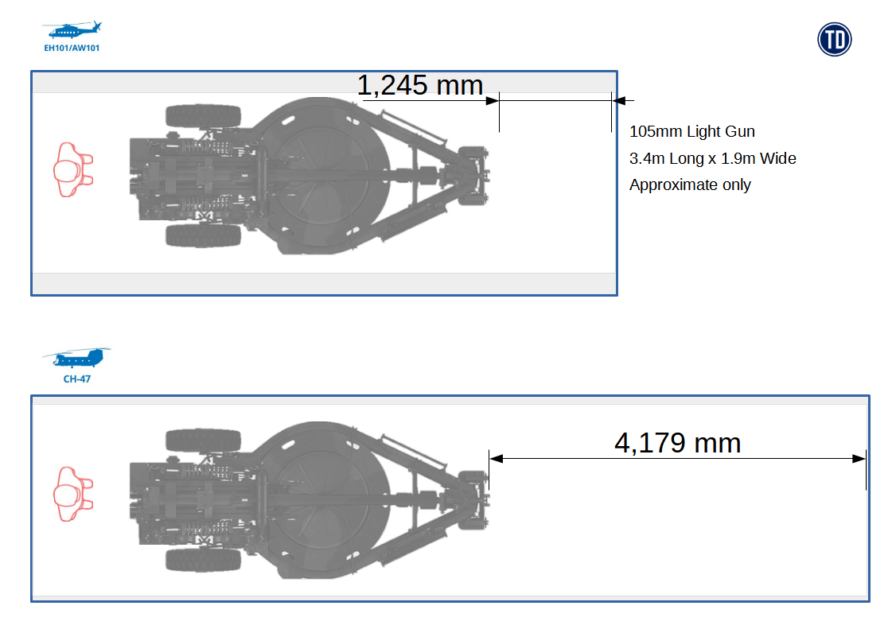
The 105 mm Ligh-Gun is not an easy load to manipulate.
The only practical means of carrying a Light Gun inside a Merlin is either manual loading and unloading, which given the ramp angle would be challenging, or using some kind of tracked dolly as shown in the previous posts.
For Chinook, most of the vehicles would be too long, although some options are shown below.
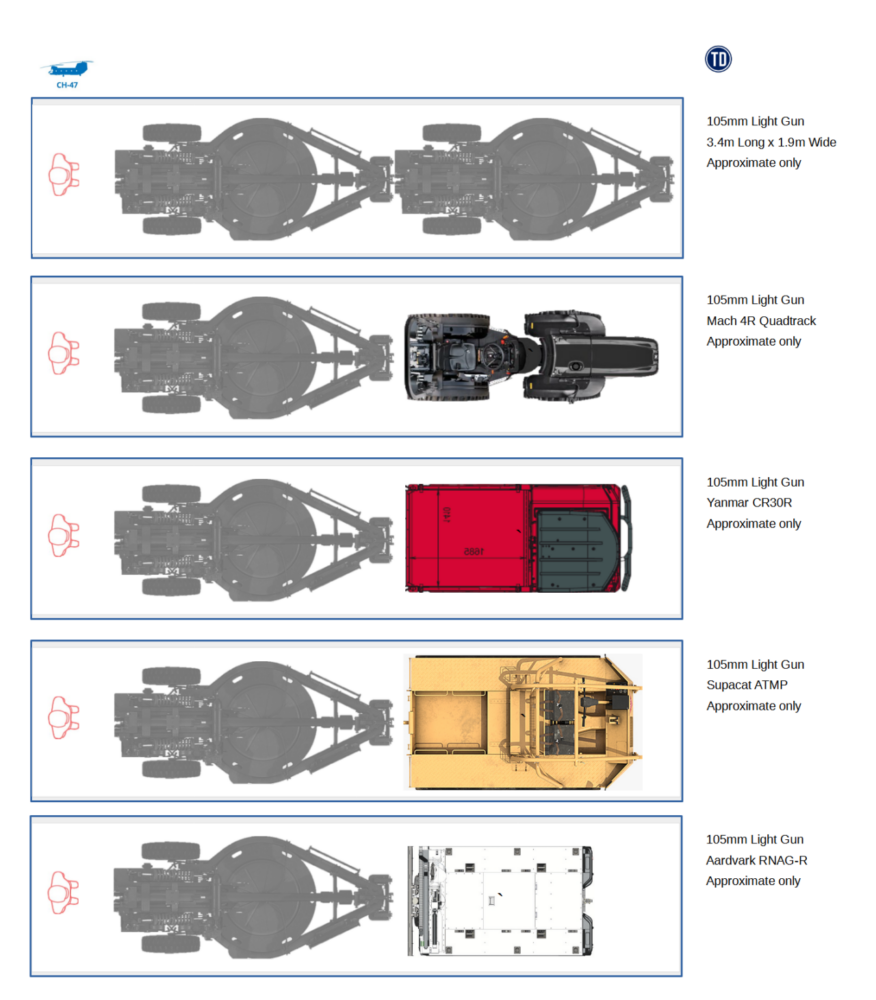
There is still life left in the Light Gun, although not many others seem to think so, at an L36 Charge Super range of 17 km, a single gun can influence an area of over 900 km2.
Mandus Hawkeye
Mandus (USA) and Bharat Forge Kalyani Group (India) are marketing a low-recoil mounted 105 mm gun, the latter with the former. Both are designed to be mounted on lightweight 4×4 vehicles and use a development of the older XM204 low recoil system.
Mandus has since developed it further, including a 155 mm version. The 105 mm system uses a variant of the US version of the L118, the M119. This is not quite as long-range as ours unless rocket-assisted ammunition is used, butt it does provide a glimpse of what might be possible.
Supacat and Mandus have shown the Hawkeye on an Extenda Mk2.
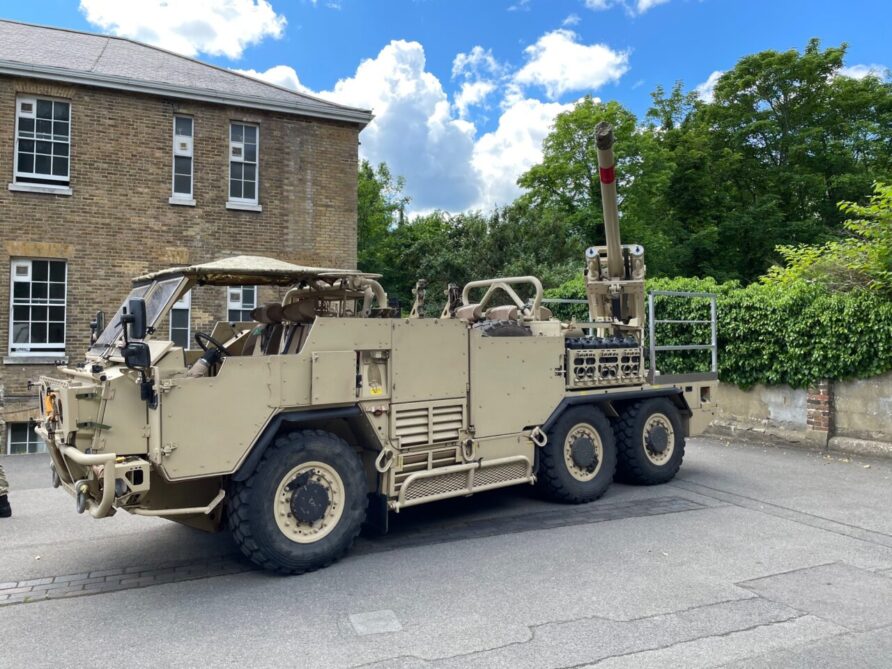
The gun and digital fire control weigh approximately 1,200 kg, and have an overall length of 3.42m, width of 0.98m and height of 1.16m.
None of the UGVs in the previous posts either have the payload or space above the load bed to accommodate it, it is either too heavy or would make the vehicle too high, same with the skid steers and UTVs.
The only vehicle that could accommodate it is one of the mini forestry forwarders from Kranman or Alstor.
They would fit inside either a Merlin or Chinook with the Hawkeye on the rear deck, with the centre of mass over the rear carriage.
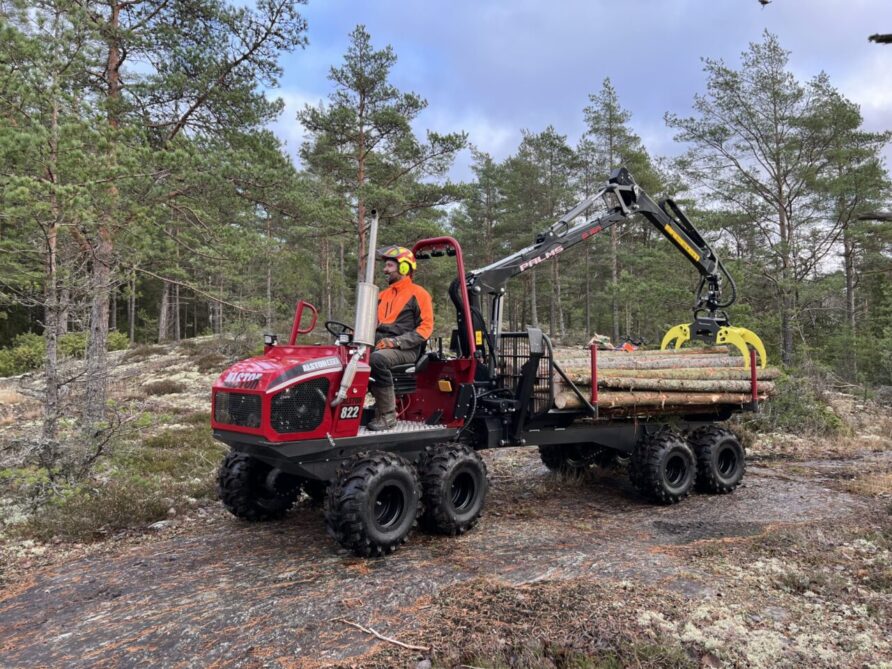
Taken together, they would also be within weight limits.
The other, and perhaps more sensible option, is to put the gun system on a trailer. Any of the vehicles described in the 105 mm Light Gun section above would be able to tow it.
Because of the low recoil, the trailer could potentially be on relatively light, wheeled, tracked, on skis, and driven or undriven.
A towed Mandus Hawkeye is an intriguing prospect for light role forces.
81 mm Mortar
In service, and costing nothing.
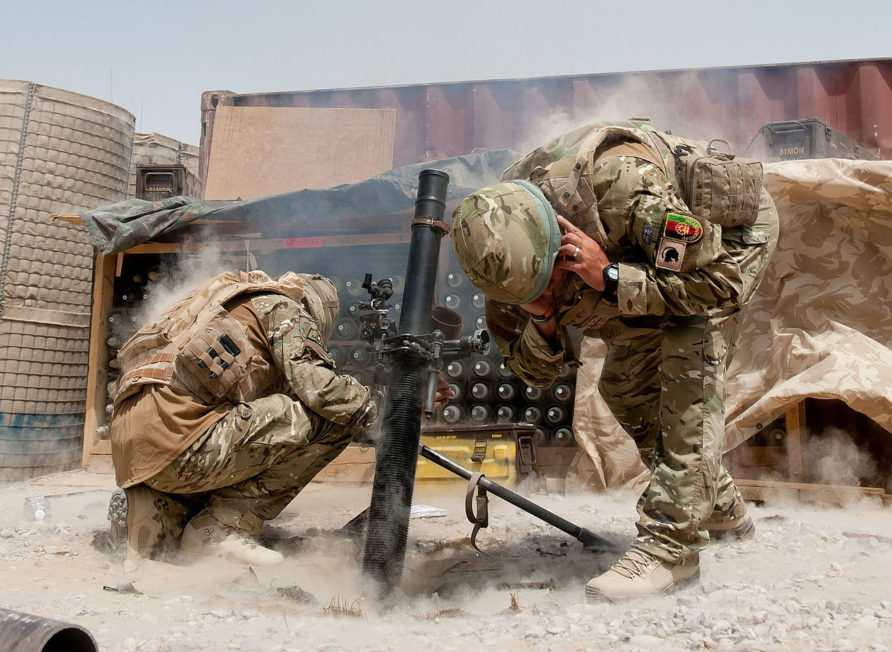
The 5 km range 81 mm mortar with a range of natures is an ideal weapon for a small air-mobile force.
60 mm mortars could also be used, again, in service (although not sure for how long).
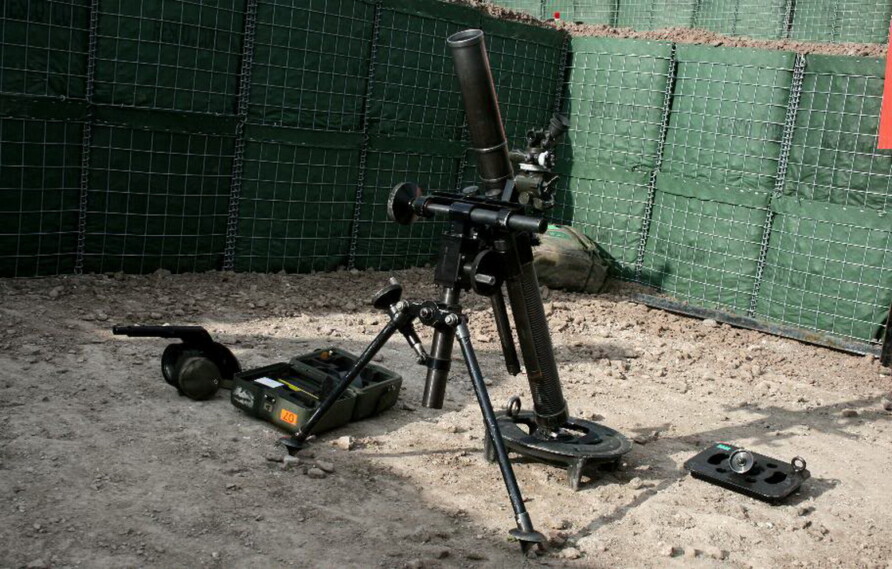
Side-by-side UTVs can use some modern mounted systems, the MRZR Alpha D4 below for example.
120 mm Mortar
If the Army does decide on 120 mm in the near to medium term, it is likely to be a mounted system and on Boxer, but the choice will introduce 120 mm mortar bombs into the supply chain, there to be exploited by lighter forces.
Although shorter range than Exactor/Spike NLOS, 120 mm mortars, even with precision bombs, are cheaper and have other benefits.
A 120 mm mortar would be yet another firepower uplift for a small company or raiding group.
120 mm mortars have a large user base and an equally diverse manufacturing and development ecosystem. Systems from Expal, Hirtenberger, and Thales are available off the shelf, with up to 10 km range in some cases.
The 8 km range Expal 120-MX2-SM is shown in the image below, as simple as it gets.
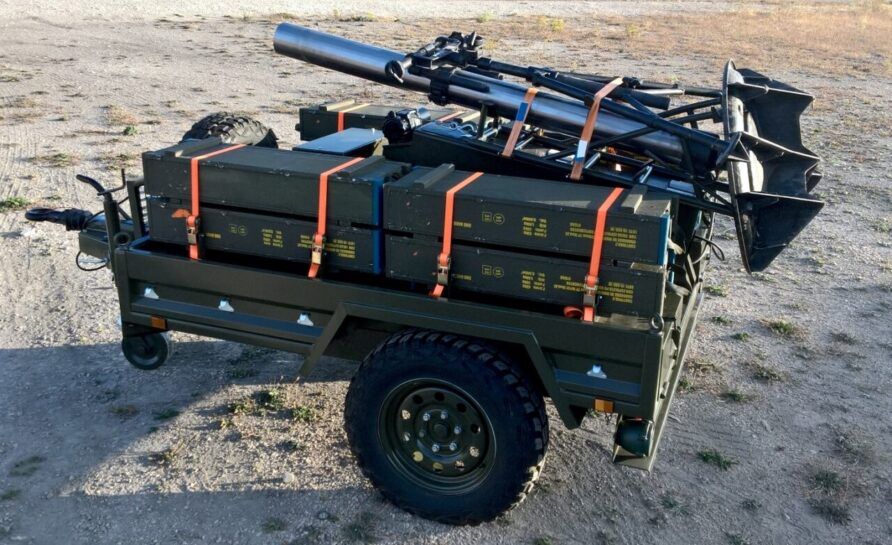
There is a large volume market and a great deal of investment in novel ammunition.
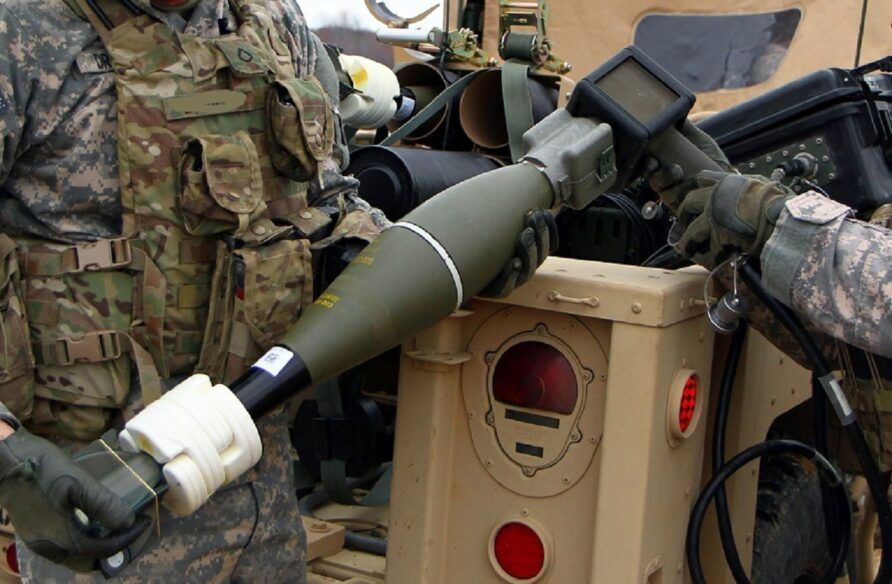
120 mm mortars have a high trajectory, well suited to mountainous, forest and urban terrain, they can use traditional bipod and baseplate, or be towed by light vehicles, including the majority of those featured in this series.
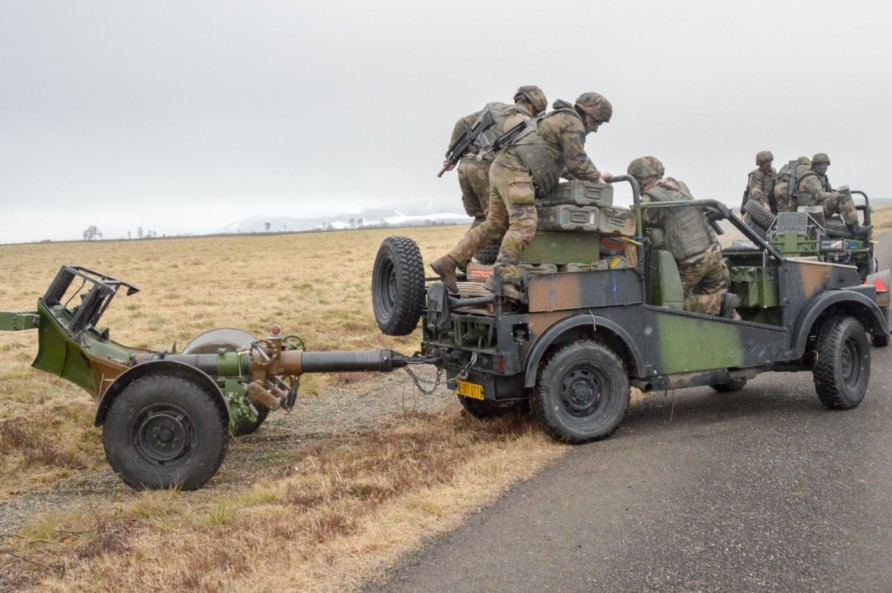
A more modern interpretation from Milanion — NTGS is shown below.
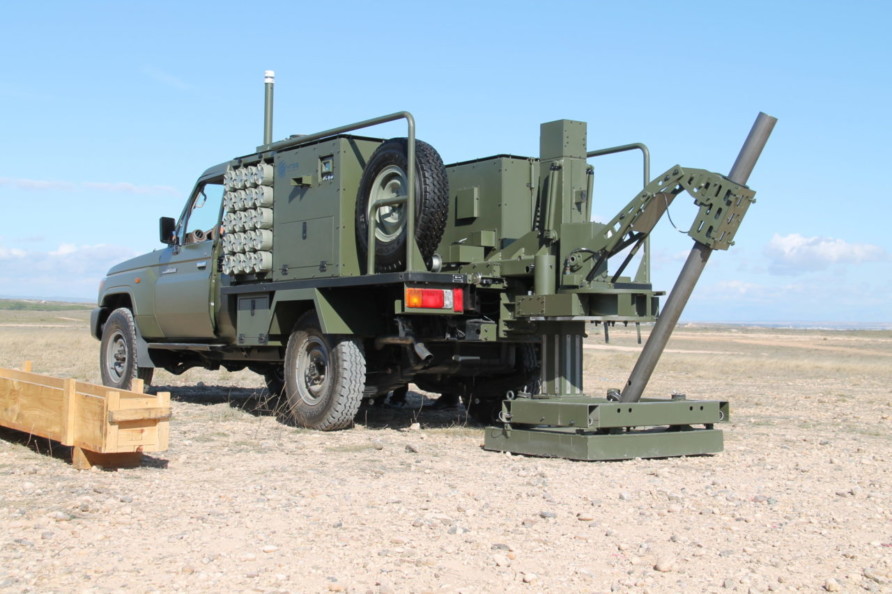
Pick the right vehicle, and it is Chinook internal carriage possible, x2, in 3D model form.
This type of vehicle-integrated mortar system can be fitted to smaller UTV-type vehicles yet again, the trade between capability and vehicle reliance has to be considered.
Before reading on, would you mind if I brought this to your attention?
Think Defence is a hobby, a serious hobby, but a hobby nonetheless.
I want to avoid charging for content, but hosting fees, software subscriptions and other services add up, so to help me keep the show on the road, I ask that you support the site in any way you can. It is hugely appreciated.
Advertising
You might see Google adverts depending on where you are on the site, please click one if it interests you. I know they can be annoying, but they are the one thing that returns the most.
Make a Donation
Donations can be made at a third-party site called Ko_fi.

Think Defence Merch
Everything from a Brimstone sticker to a Bailey Bridge duvet cover, pop over to the Think Defence Merchandise Store at Red Bubble.
Some might be marked as ‘mature content’ because it is a firearm!
Affiliate Links
Amazon and the occasional product link might appear in the content, you know the drill, I get a small cut if you go on to make a purchase
Longer Range Missiles
This section might get a bit left-field, fair warning.
Naval Strike Missile
Naval Strike Missile from Kongsberg is in service with the Royal Navy and others, a mature and capable anti-ship guided missile.
By introducing the missile into the UK supply chain, the Royal Navy has already done the heavy lifting.
With a range of over 185 km, it weighs approximately 710 kg in its launch capsule.
Vehicle launch options have been available for some time, but because the USMC has it in service, we might be able to leverage some of the work they have done on two round launchers on an uncrewed JLTV called the Naval/Marine Corps Expeditionary Ship Interdiction System (NEMESIS).
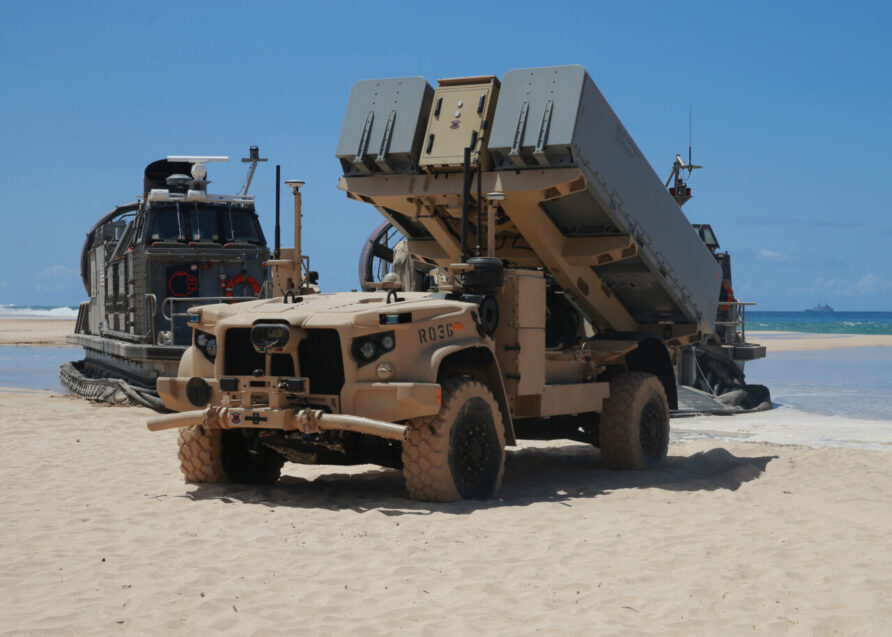
JLTV certainly doesn’t fit in a Merlin or Chinook, not that we have any anyway.
The image below shows a single canister in a USMC CH-53E, that has an internal cabin width of 2.29m.
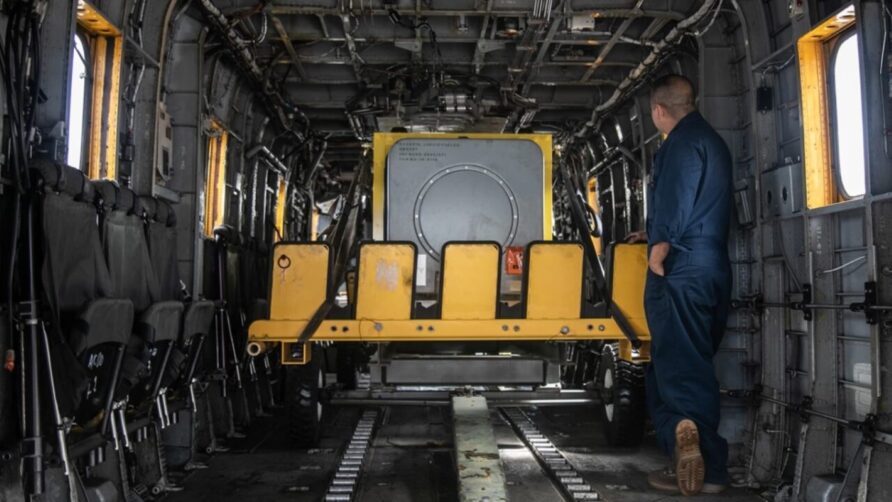
The USMC has different constraints, budgets, and requirements than us, but it does show the concept is not crazy; it is being done and done well.
The missile container is 4m long, 0.81m wide and 0.8m high. For Merlin and Chinook, the missile itself is well within limits, but carriage would likely require something lower than most of the vehicle load beds in the series, except the forestry forwarder described above.
The weight of the fire control and data link system and elevation mechanism would need to be accounted for, but even with that included, a 1-round launcher is still likely to be less than 1 tonne. A two-round launcher would be less than 2 tonnes, towable by many vehicles in this series.
A 4m plus trailer is a challenging load for Merlin, but as with the Light Gun, it could be possible to use a tracked dolly or levelling platform to load and unload, even with the ramp angle. The trailer towing assembly creates some dead space that could be exploited or, as with the in-service ATV trailer, folded up out of the way or detached.
It does not leave a large amount of space in Chinook, either.
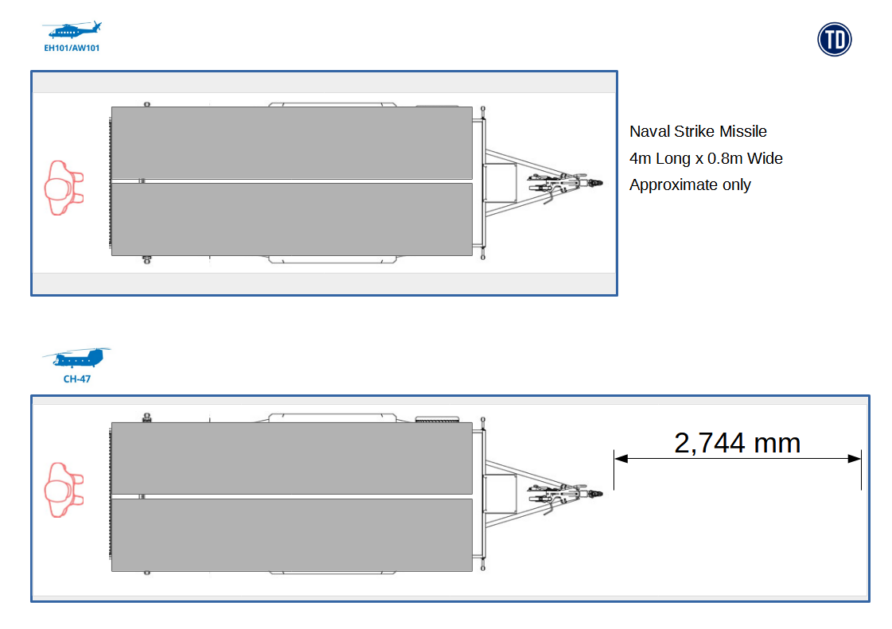
As it is obvious from the image above, a two-missile-wide trailer would be relatively snug, an alternative 1 missile trailer, is below.
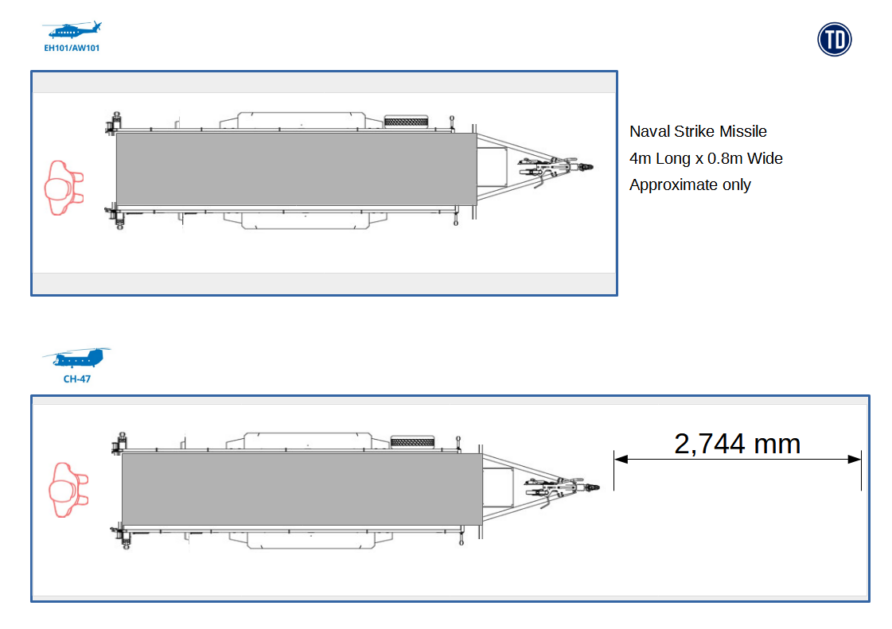
In some ways, it is a similar problem to towing the Light Gun, but with fewer vehicles qualifying because of the longer length. The trailer wheels would be outboard of the missile canister to allow them greater travel whilst preserving ground clearance and height to the fuselage ceiling, another reason why a one missile trailer is better.
There are not many vehicles less than 2.75m long with the required towing capacity, the Loglogic Tooltrack or RANG-R being two.
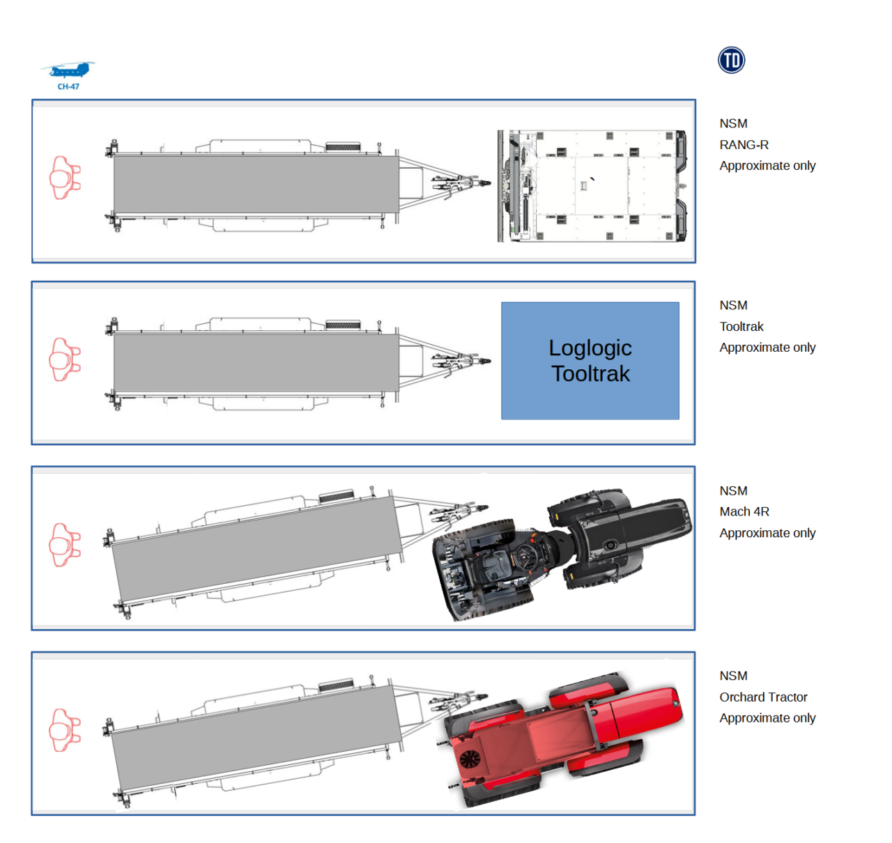
The relatively narrow width of the trailer also allows it to be angled, allowing a couple of other narrow vehicles such as the orchard tractor or Mach 4R to be used.
Of these two, the articulated Mach 4R would probably be easier to do this with.
A detachable A-frame and towing assembly would make this easier.
GMLRS and Land Precision Strike
What do we know?
We know the original MLRS concept had a trailer option.
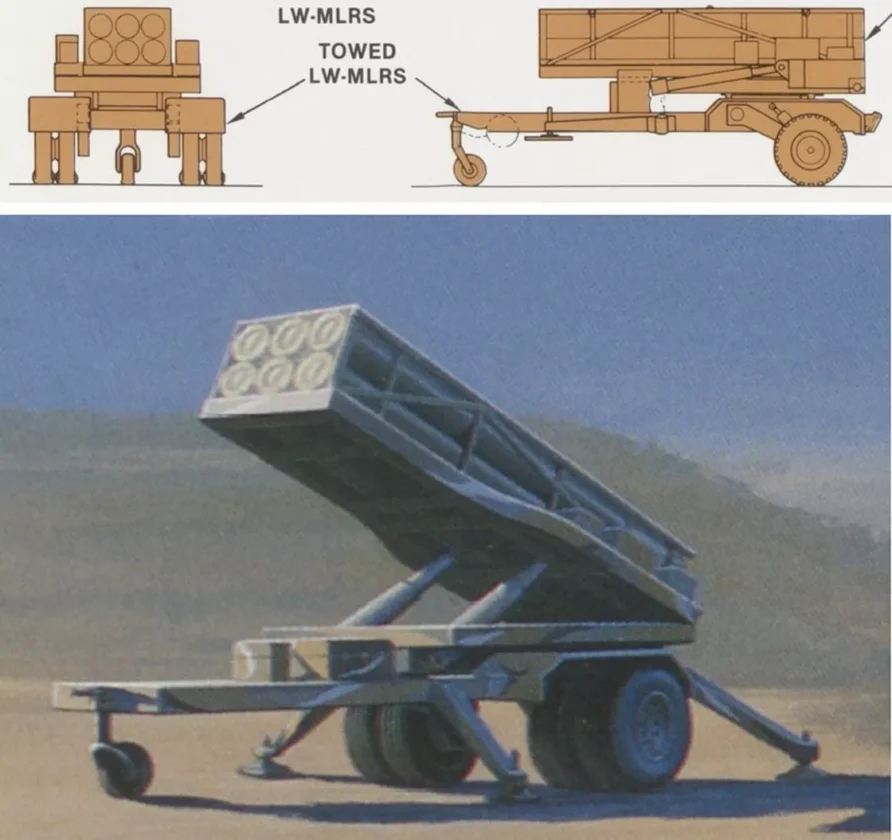
We know a lightweight non-slewing launcher can be engineered, we did it and tested it (and this one had self-loading).
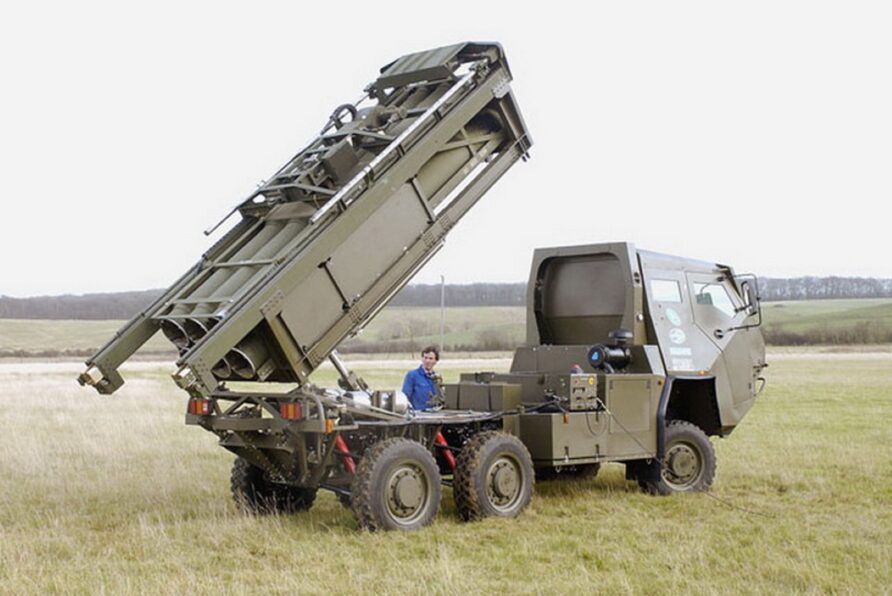
We know the dimensions and weights of the Launch Pod Container (LPC), 4.04m long, 1.05m wide, and 0.84m (with skids) high.
Its maximum weight is 2,270 kg.
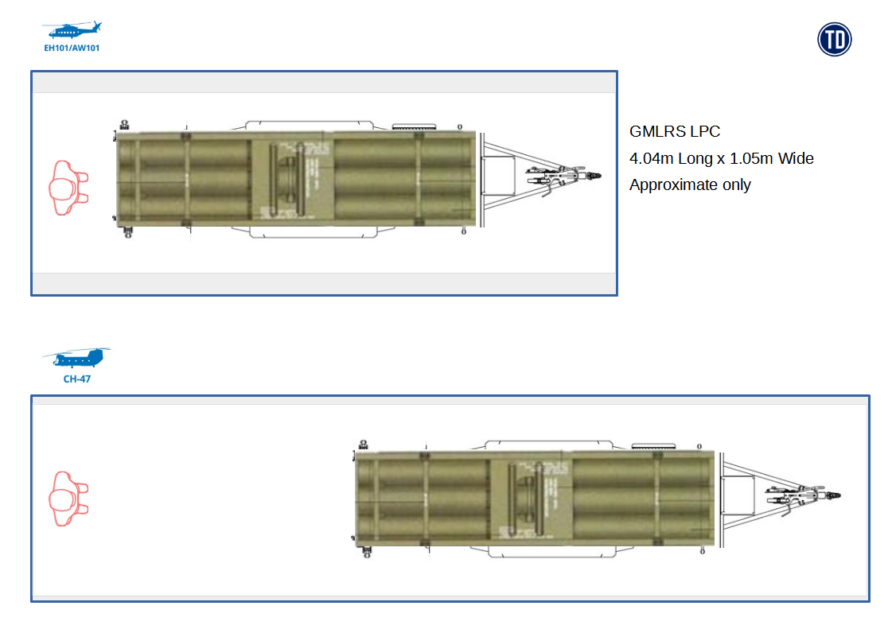
It is not beyond the realm of possibility that the same trailer could be used for both
The trailer would likely need stabilising legs, but this would not be an insurmountable engineering problem. Given the use case, self-loading would not be a requirement to make it simple and low-weight, just the physical housing and some means of tilting the load bed.
Tipping body trailers are commonly available, another engineering problem that has long since been solved
The USMC and Oshkosh are also looking at similar concepts that utilise the same base vehicle as NSM with GMLRS, and even Tomahawk.
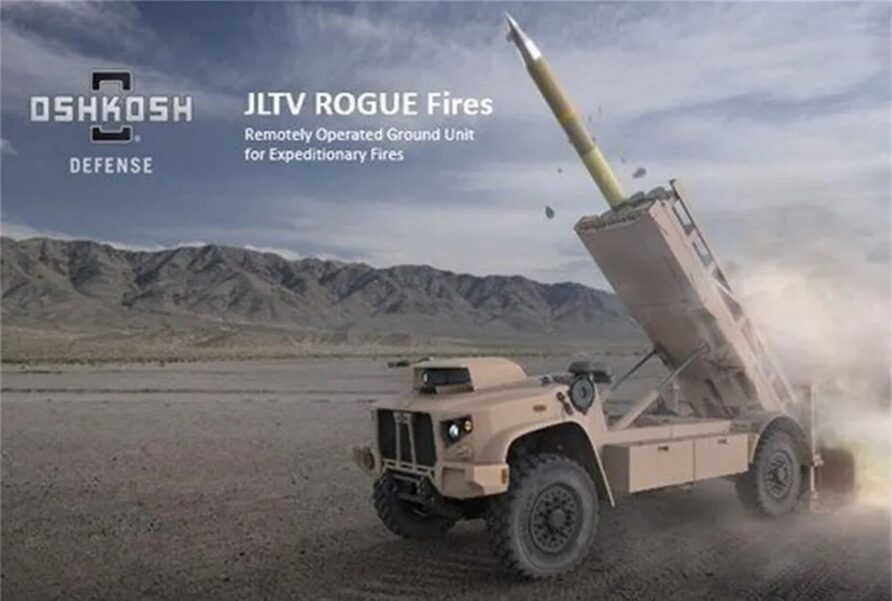
This opens up the possibility of in-service GMLRS at 80 km plus, 120 km plus GMLRS+, 150 km ER-GMLRS, the alternative warhead, G-SMArt sensor fuzed submunitions, GL-SDB, Precision Strike Missile (PrSM), whatever the Germans are doing with JSF-M, and even something from our friends at Hanwha.
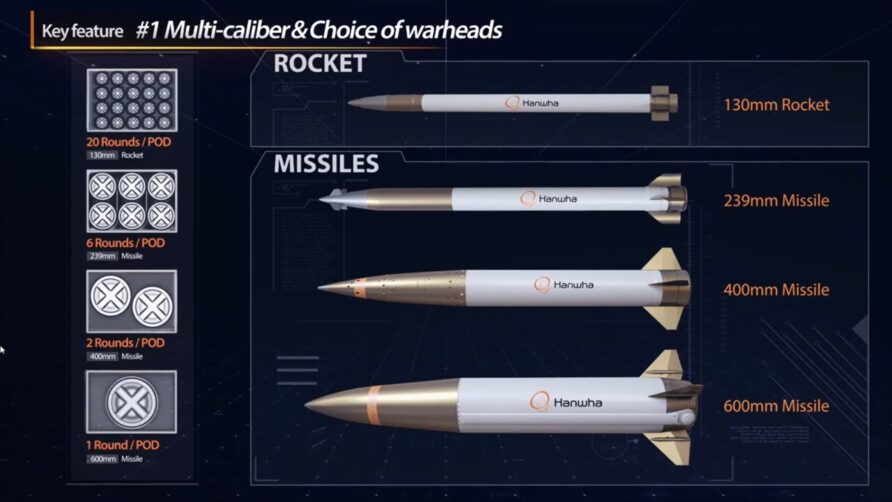
It also brings into view whatever the British Army is doing with Land Precision Strike.
Land Precision Strike could be MLRS/GMLRS Launch Pod Container based.
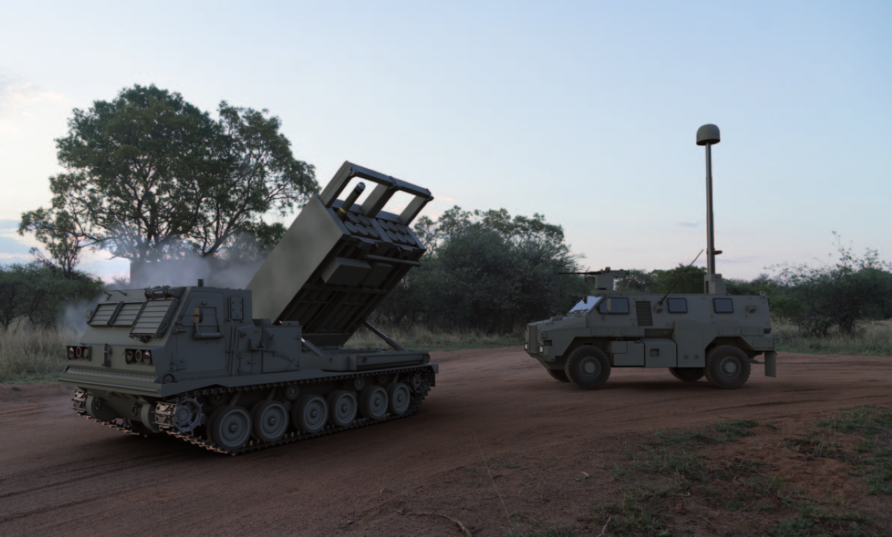
Or individual launch canister-based, as per CAMM.
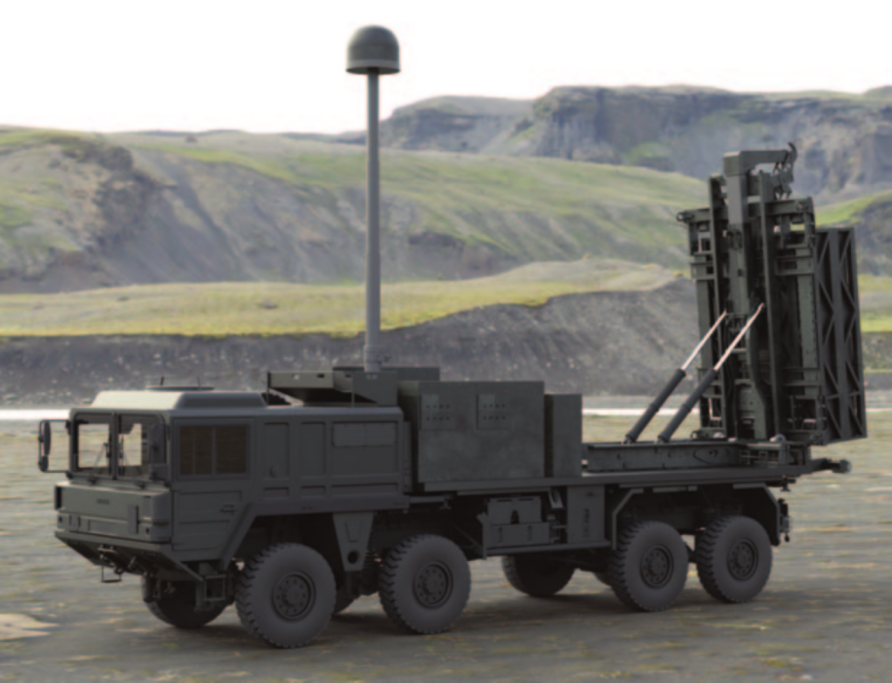
The launch canisters are approximately 200 mm wide, so to keep within the same dimensional limits as NSM and the LPC, it would be sensible to assume three wide by two high, similar to the GMRLS.
Whether Land Precision Strike turns out to be a ‘long-range Brimstone’.
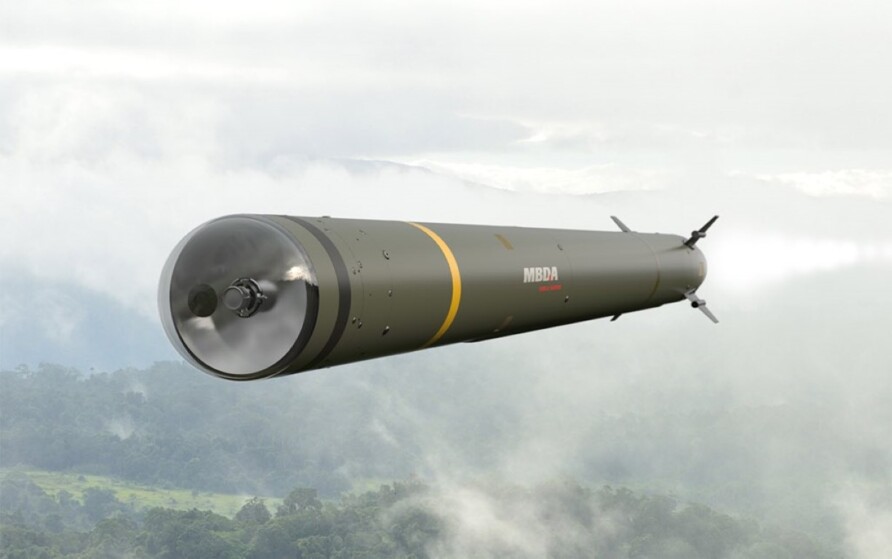
Or a dispensing payload for a GMLRS rocket.
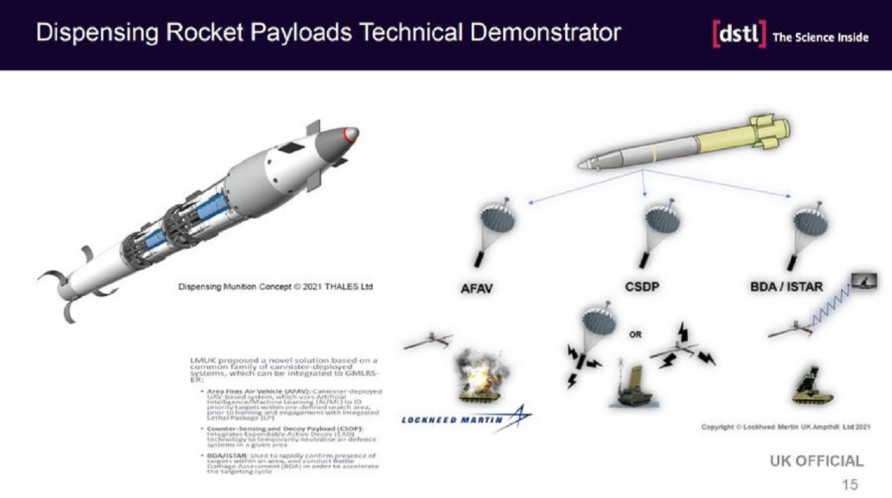
It doesn’t matter at this stage.
ASRAAM has been mounted on a flatbed Supacat vehicle for use in Ukraine to excellent effects, notice how narrow the launch mechanism is.
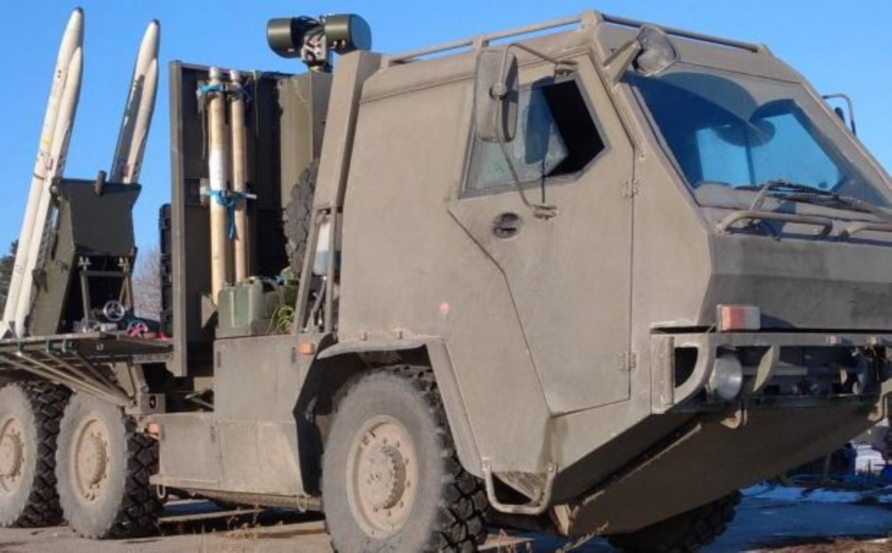
Even CAMM-ER is only 4.2m long.
It should be possible to launch all of these missiles and rockets on a trailer that can be carried inside a Merlin or Chinook, and with a bit of forethought, the same trailer.
Integration might not be as sophisticated as on the larger vehicles, with no onboard sensors or fire control, no onboard power generation or hydraulics, and no onboard reloading, they would be loaded, used, and discarded.
Discover more from Think Defence
Subscribe to get the latest posts sent to your email.


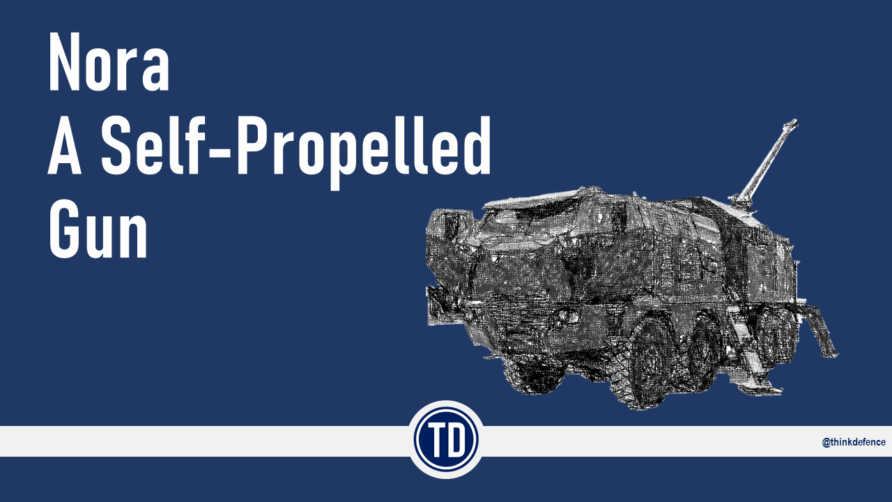
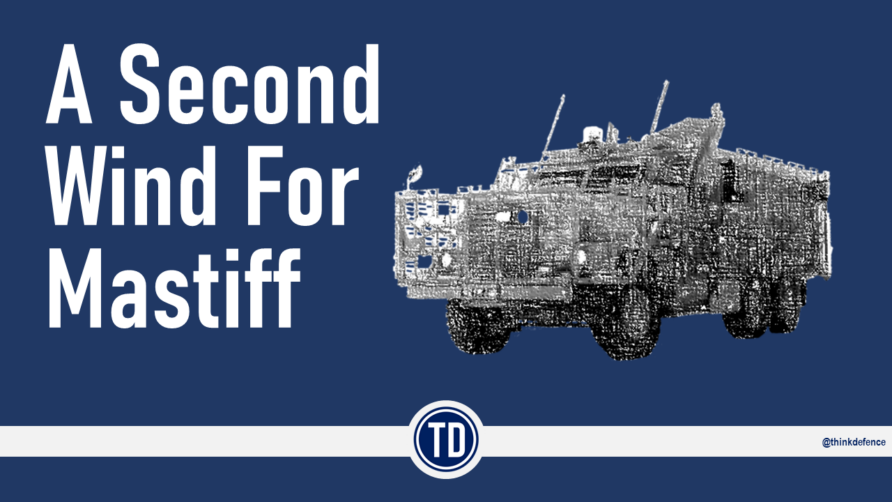
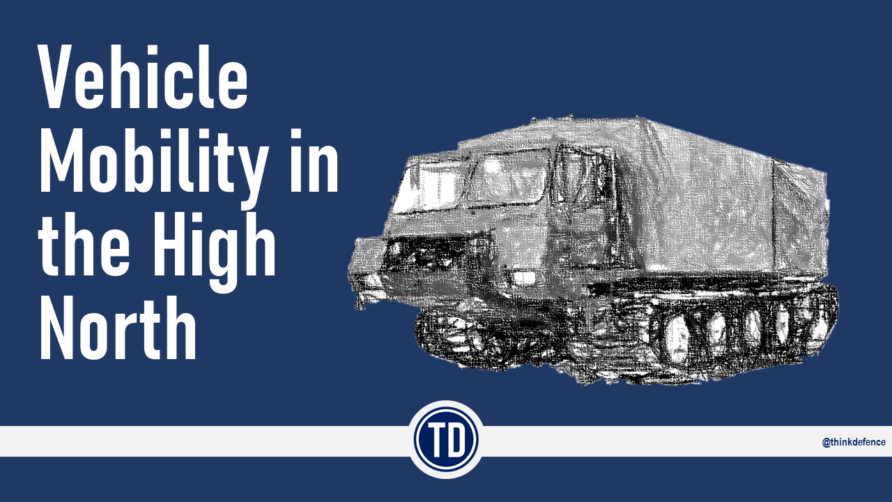
Just a quick note — in the pilot of The Rat Patrol the Germans have a truck with literally a ladder on the back. They stop the truck, soldiers hold the (swiveled) ladder in place while another climbs to top and takes a look around. The Hawkeye Land Surveillance reminded me of that.